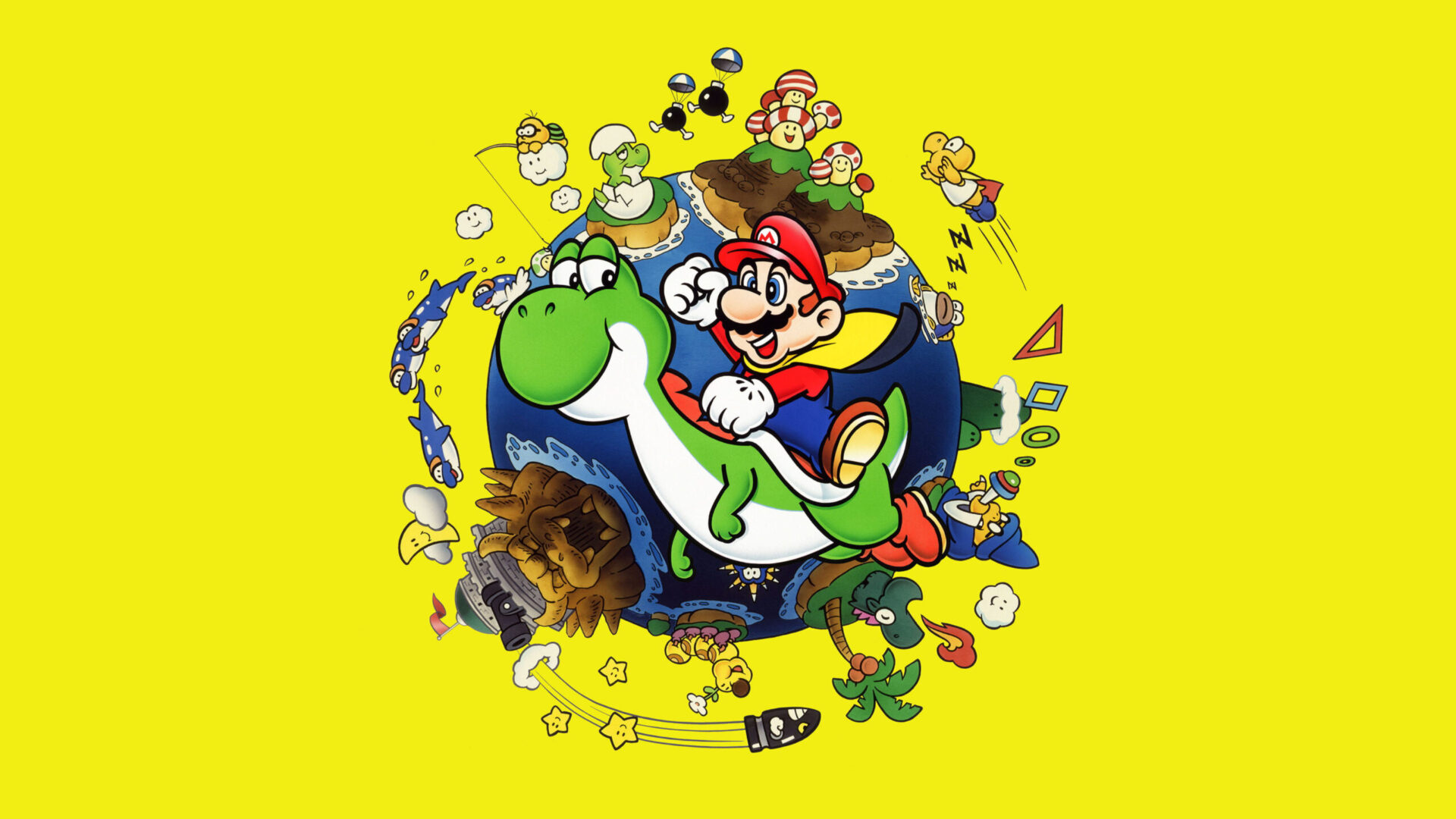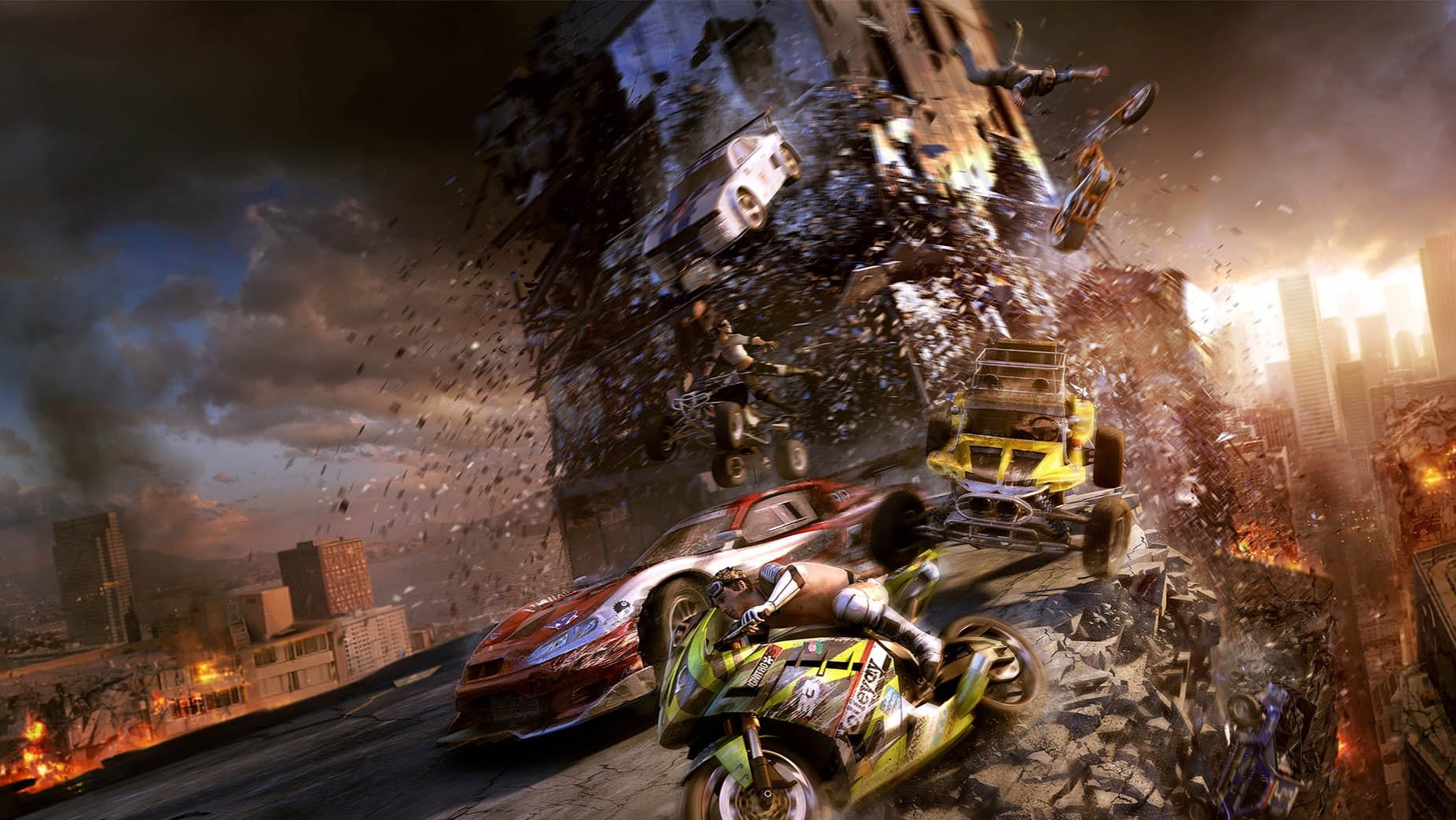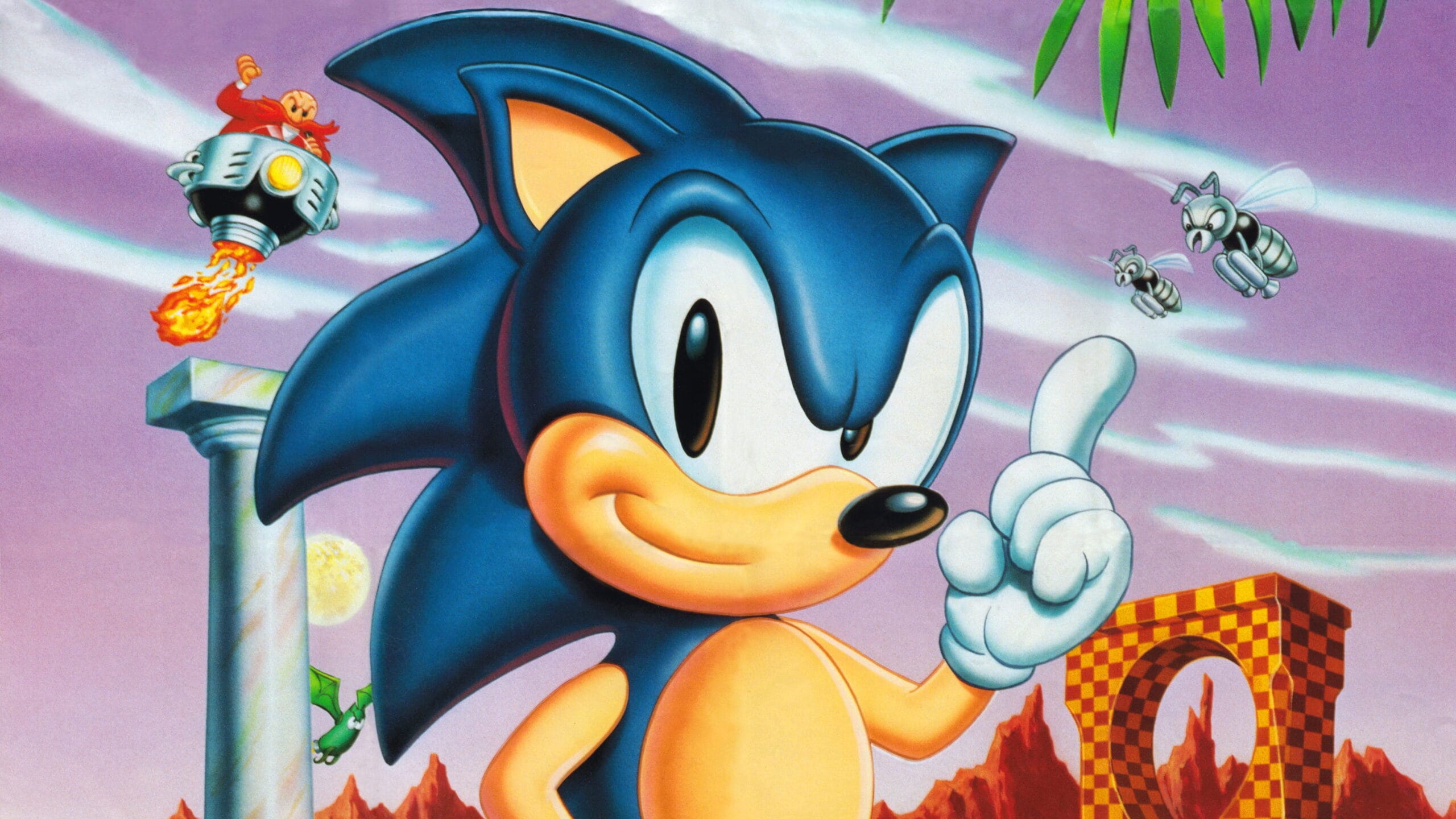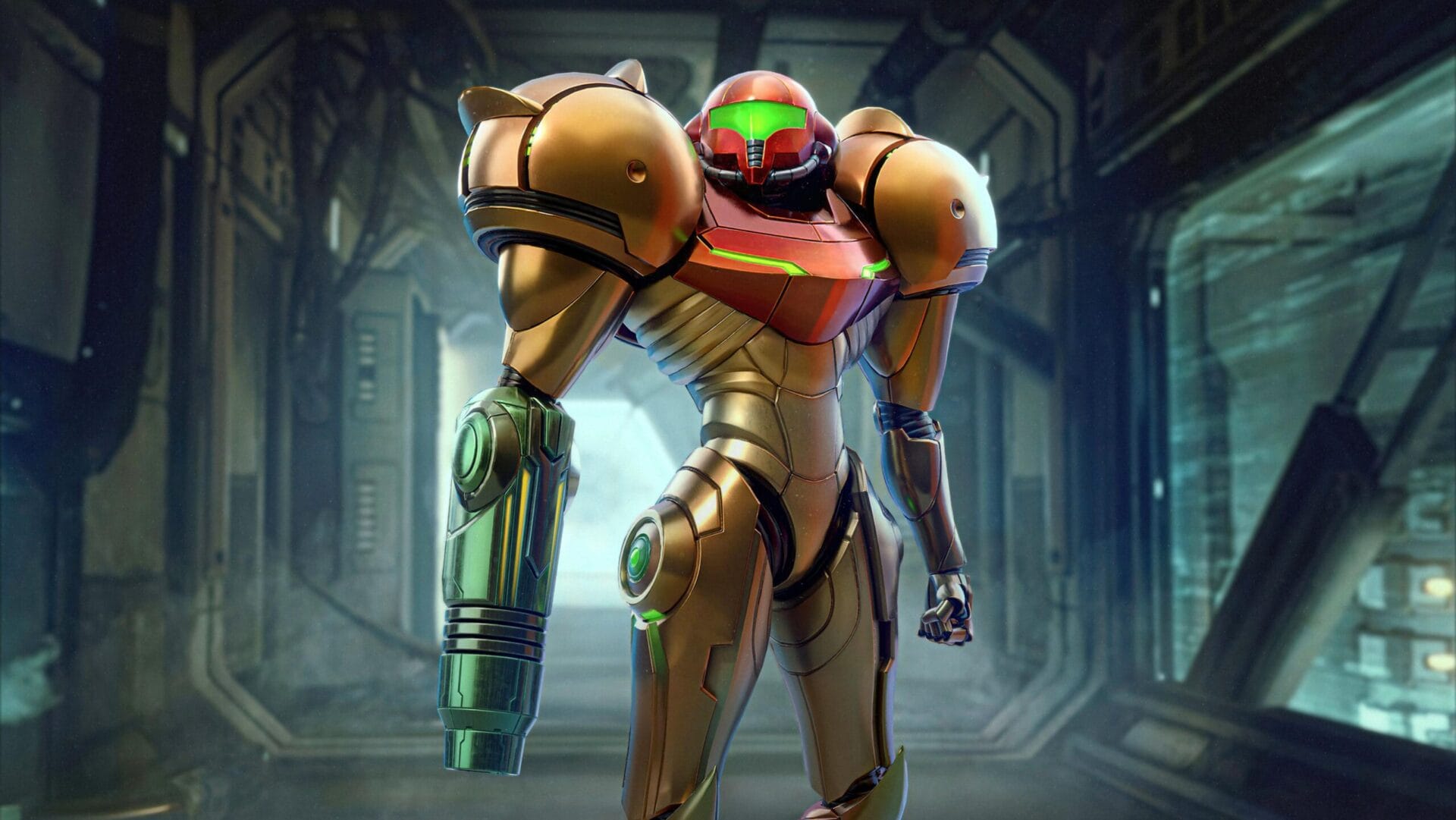The 16-bit era gave us a level of polish, creativity, and variety that few consoles have ever matched—and at the center of it all was the Super Nintendo. With gorgeous sprites, iconic soundtracks, and tight controls, the SNES set the gold standard for platformers. Its hardware capabilities let developers push boundaries, while Nintendo’s in-house teams and third-party studios competed to create unforgettable adventures.
From innovative level design and memorable characters to fluid gameplay and stunning visuals, these SNES platformers deliver an experience that’s just as fun today as it was in the ’90s. Replayability, challenge, and that unmistakable 16-bit charm separate the good from the great—turning these games into timeless classics still celebrated by retro gamers around the world.
Super Mario World
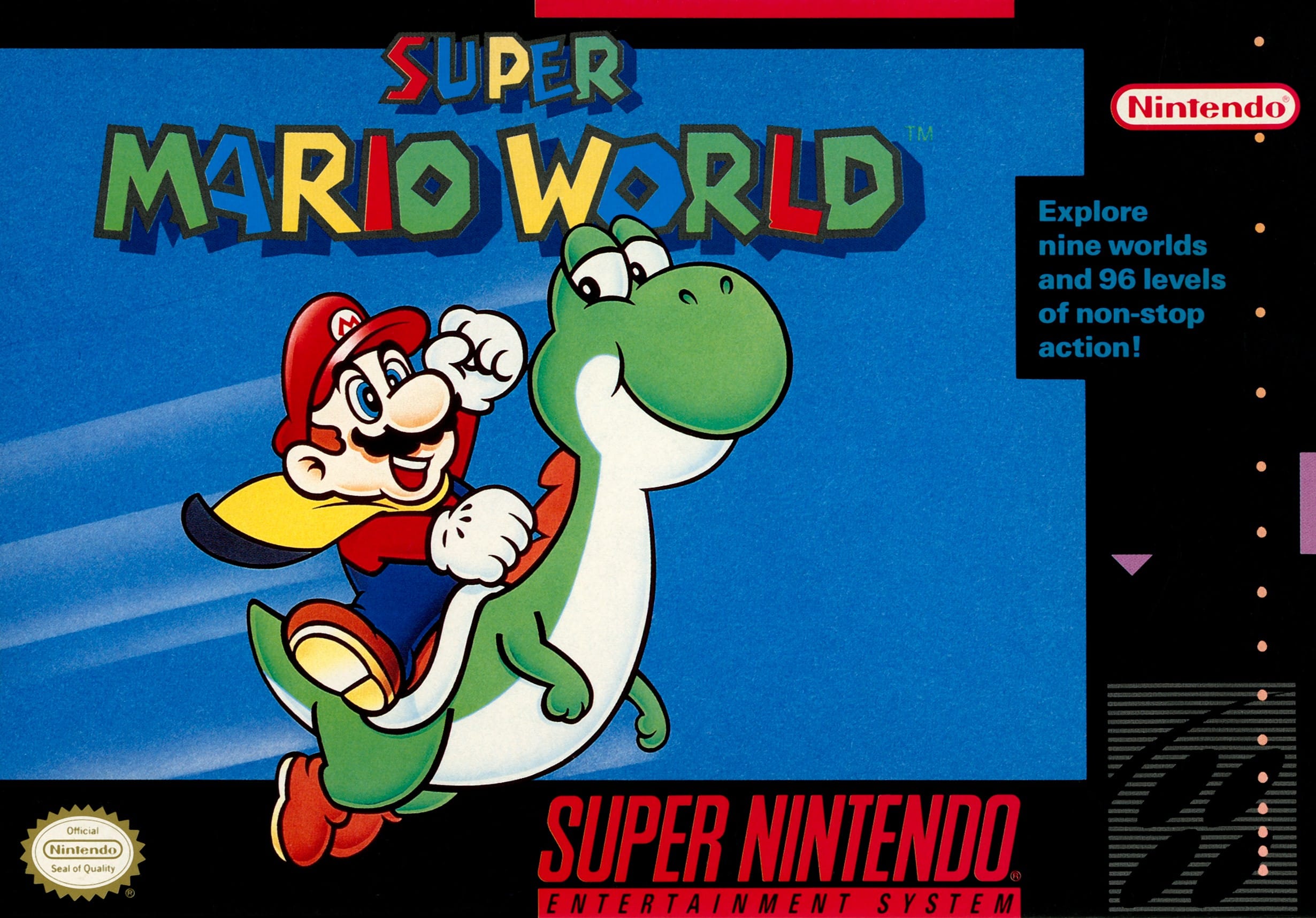
- Developer: Nintendo
- Release Year: 1990
No game captured the charm of the 16-bit leap quite like Super Mario World. Released alongside the SNES, it expanded the Mushroom Kingdom into a vast, interconnected map packed with secrets, alternate exits, and hidden worlds. The game introduced Yoshi, adding new gameplay layers with his tongue-snatching abilities and fluttering jumps. Tight controls made every move feel responsive, while power-ups like the Cape Feather let players soar through stages, rewarding skill and exploration. Koji Kondo’s iconic soundtrack, filled with upbeat and moody themes, perfectly complemented each diverse environment—from the sunlit plains of Yoshi’s Island to the eerie Ghost Houses.
Why It’s Worth Playing: Super Mario World is more than nostalgia; it’s a near-flawless platformer that laid the foundation for decades of 2D Mario games. Its branching paths, rewarding secrets, and timeless controls make it a joy to replay, whether you’re hunting every exit or just breezing through to Bowser’s castle.
Super Mario World 2: Yoshi’s Island
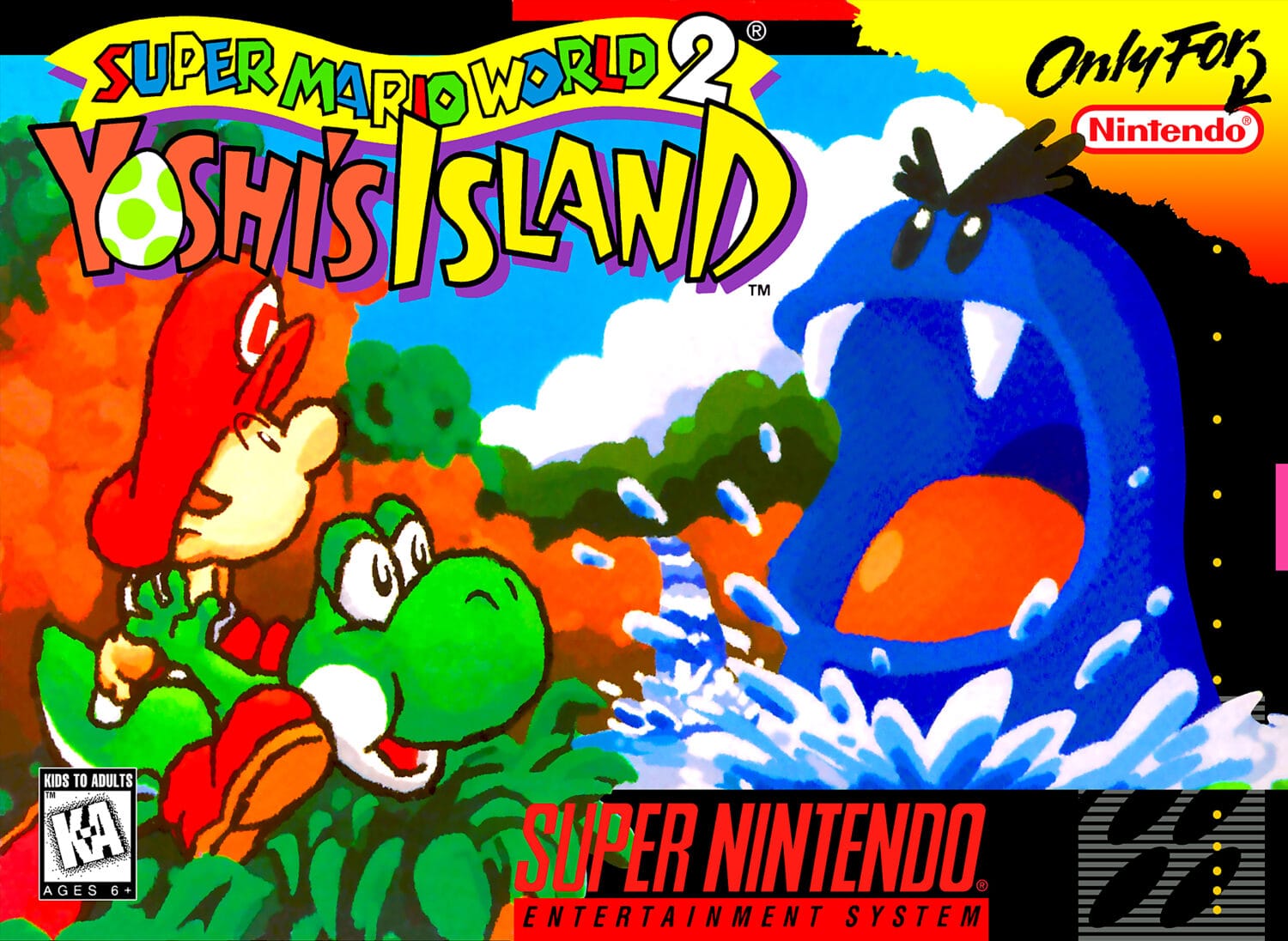
- Developer: Nintendo
- Release Year: 1995
Rather than rehash Super Mario World, Nintendo created something entirely new with Yoshi’s Island. Its distinct, crayon-like art style brought a playful, storybook world to life—pushing the SNES to showcase effects like sprite scaling and morphing with the Super FX2 chip. Gameplay centered on Yoshi’s unique abilities: flutter jumps gave precision platforming a new twist, and the egg-throwing mechanic transformed combat and puzzle-solving into a skillful dance. Levels were filled with inventive set pieces, from giant bosses to mind-bending transformations like Helicopter Yoshi. Each stage encouraged exploration and mastery, rewarding players who sought to 100% the game with hidden red coins and flowers.
Why It’s Worth Playing: Yoshi’s Island is a technical marvel and a masterclass in creative platformer design. It stands out as one of the most unique Mario universe games ever made, delivering challenging, inventive levels with an art style that still looks fresh today. Perfect for players who want platforming with a dose of puzzle-solving and a sprinkle of childhood wonder.
Kirby Super Star
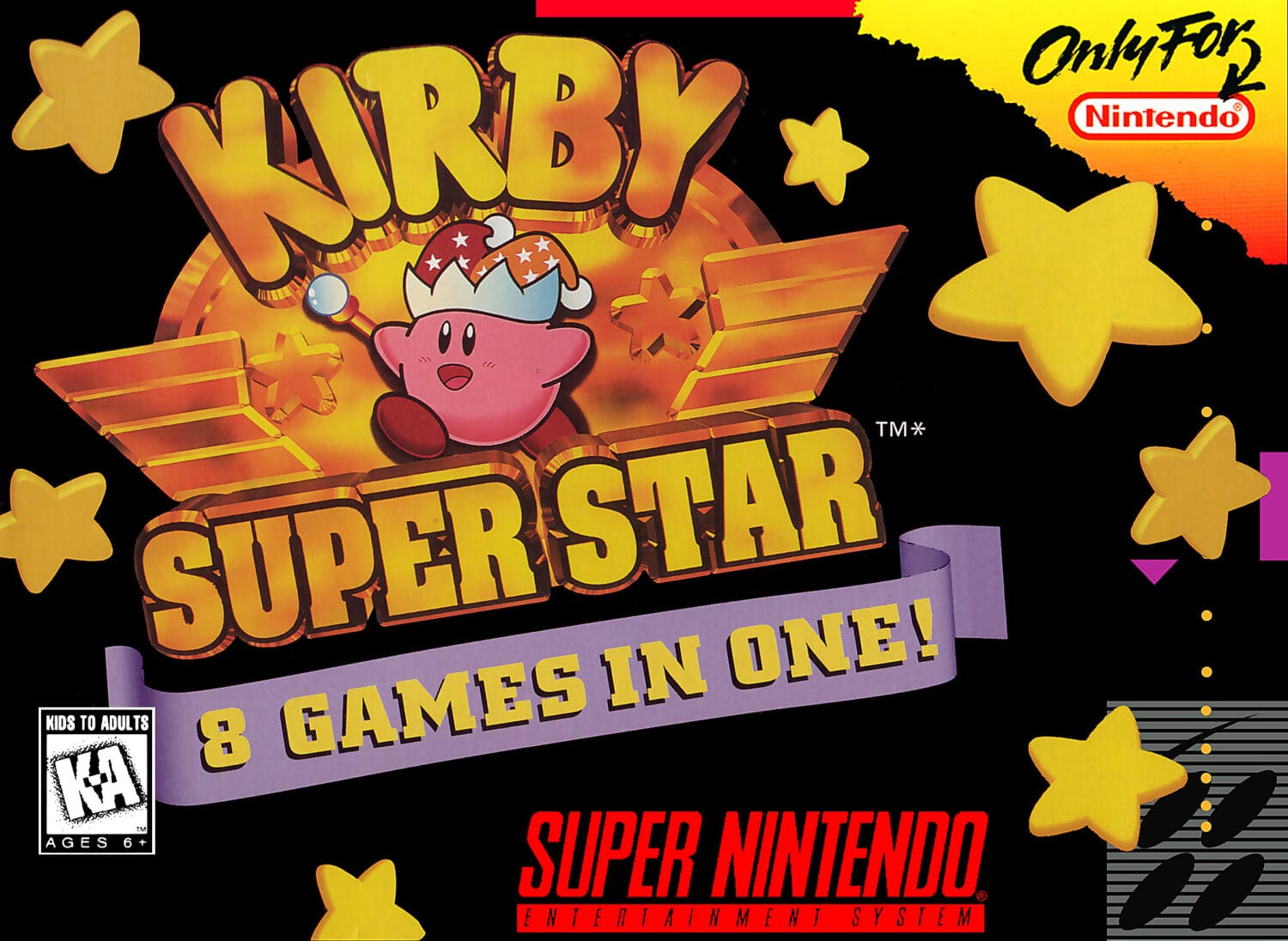
- Developer: HAL Laboratory
- Release Year: 1996
Kirby Super Star is a platforming feast that packs eight distinct adventures into one cartridge, each with its own mechanics, stories, and challenges. Whether you’re racing King Dedede in Gourmet Race, exploring the sprawling Great Cave Offensive, or teaming up with a friend in the cooperative-friendly Spring Breeze, there’s something for everyone. Kirby’s signature copy ability system shines brighter than ever here, letting players wield a vast arsenal of powers with fluid, satisfying controls. The game’s crisp, colorful sprites and upbeat soundtrack make every adventure pop with energy, while the dynamic partner system—where enemies can become allies—adds strategic depth and endless replayability.
Why It’s Worth Playing: With its variety-packed gameplay and creative scenarios, Kirby Super Star delivers one of the richest platforming experiences on the SNES. It’s perfect for both newcomers and veterans, offering easy-to-learn mechanics alongside plenty of challenge for completionists. Few platformers feel as generous or joyful.
Kirby’s Dreamland 3
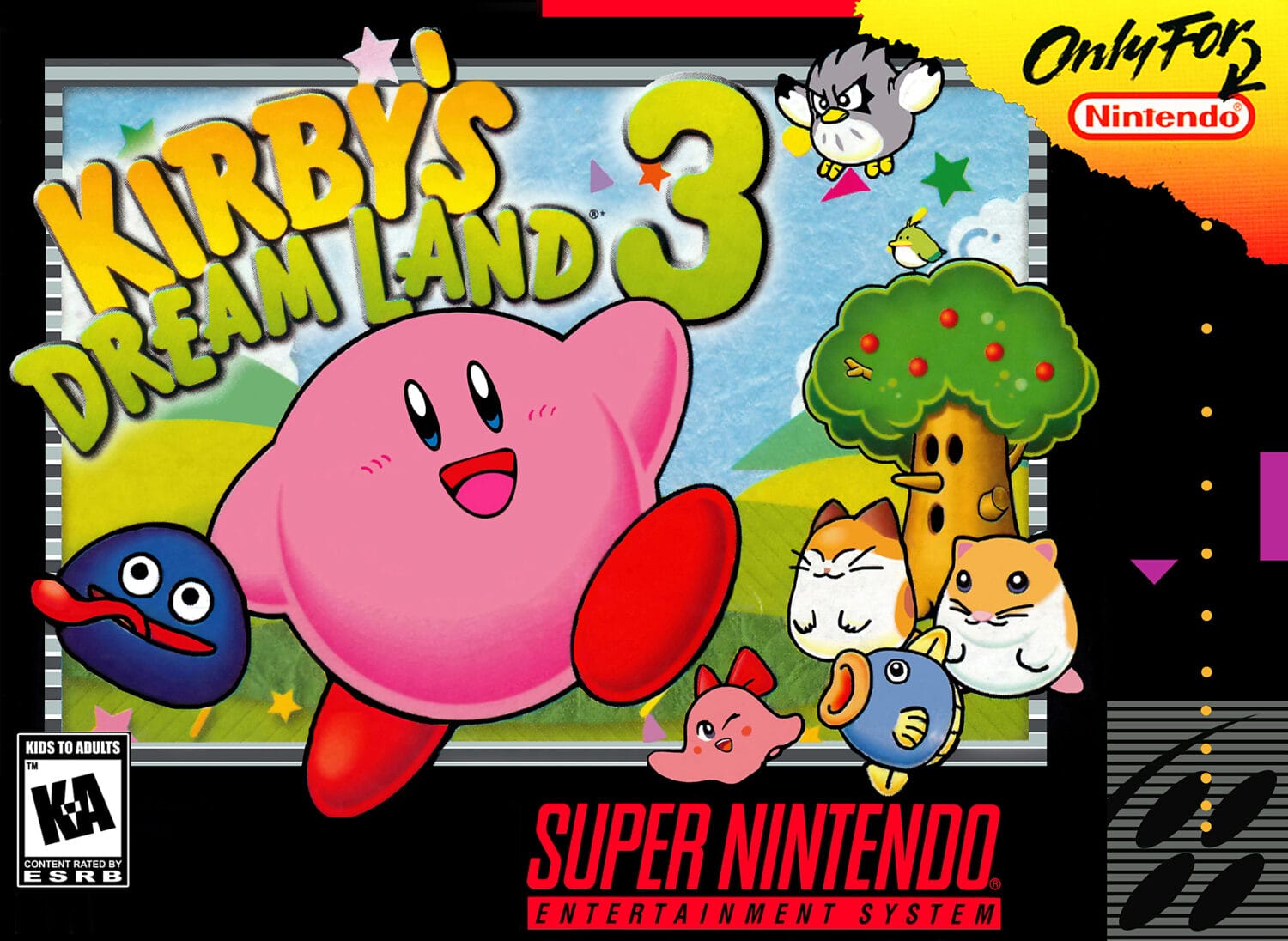
- Developer: HAL Laboratory
- Release Year: 1997
Released near the end of the SNES’s life, Kirby’s Dreamland 3 is a visual and mechanical evolution of the series. The game’s charming, pastel, almost chalk-like art style gives it a cozy, storybook aesthetic unlike anything else on the console. It introduces new animal friends, each adding unique abilities and drastically changing how Kirby’s powers work—transforming simple moves into creative combos. Levels are filled with subtle puzzles and hidden objectives, encouraging exploration beyond simply reaching the goal. With optional challenges tied to getting the true ending, the game rewards players willing to dig deeper into every world.
Why It’s Worth Playing: Kirby’s Dreamland 3 is one of the SNES’s most beautiful games, both visually and in spirit. Its relaxed pace, inventive use of animal partners, and layered secrets make it perfect for players who want a laid-back yet rewarding platformer that’s easy on the eyes and big on charm.
Super Metroid
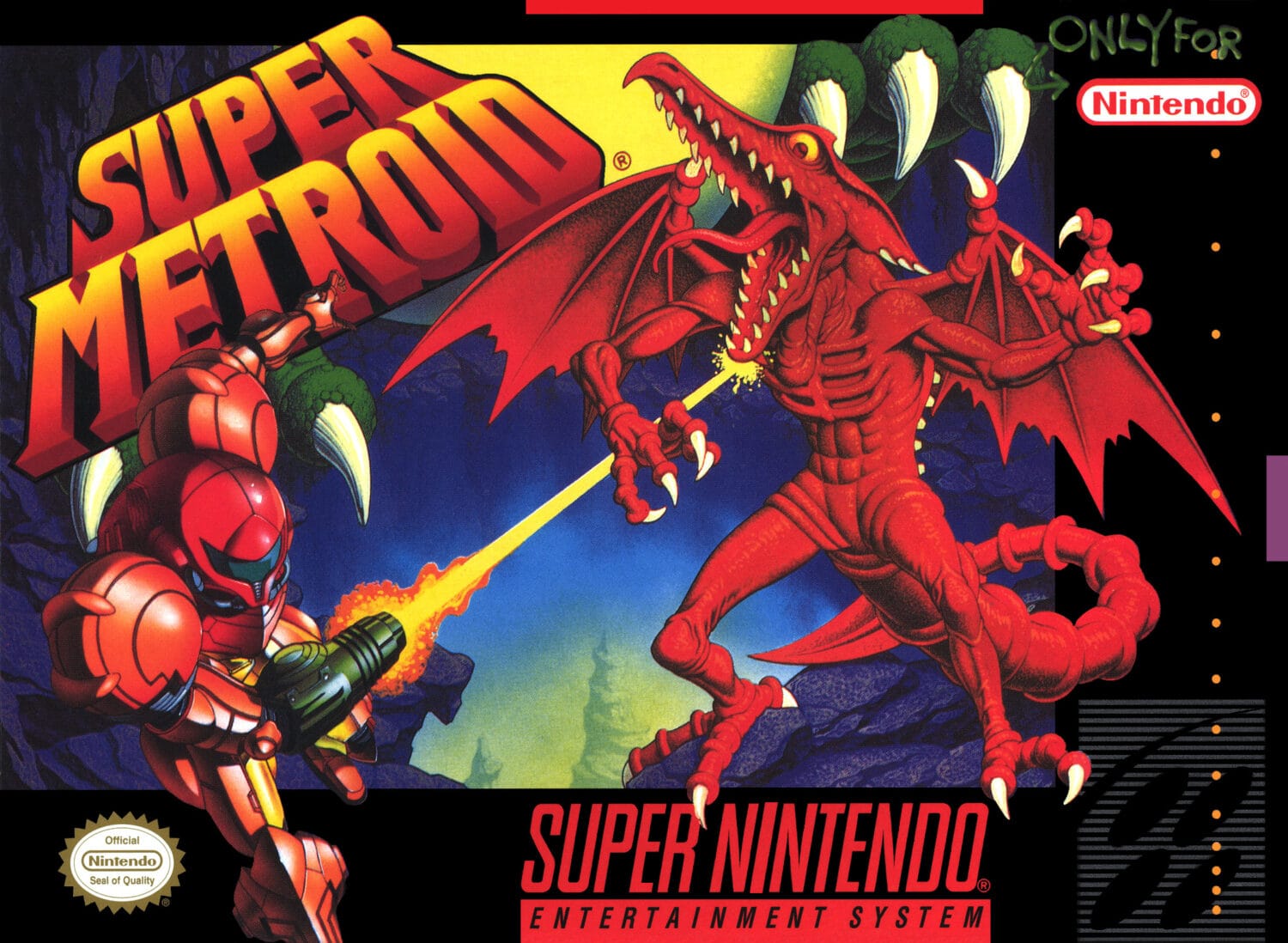
- Developer: Nintendo
- Release Year: 1994
Super Metroid is a towering achievement in both platforming and game design. Dropping players into the haunting, labyrinthine caverns of Planet Zebes, it perfected the formula of non-linear exploration that would become the blueprint for the entire “Metroidvania” genre. The atmosphere is unmatched: eerie music, minimalist storytelling, and environmental details build a world that feels alive, dangerous, and deeply immersive. The controls remain tight and responsive, letting players master advanced techniques like wall jumps and bomb jumps to push boundaries even further.
Why It’s Worth Playing: Super Metroid isn’t just a classic; it’s essential. It pioneered an entire genre of exploration-driven platformers, offering an atmospheric, open-ended adventure that rewards curiosity and mastery. Even today, few games capture the same sense of mystery and satisfaction, making it a must-play for anyone who loves platforming, sci-fi, or game design done right.
Donkey Kong Country
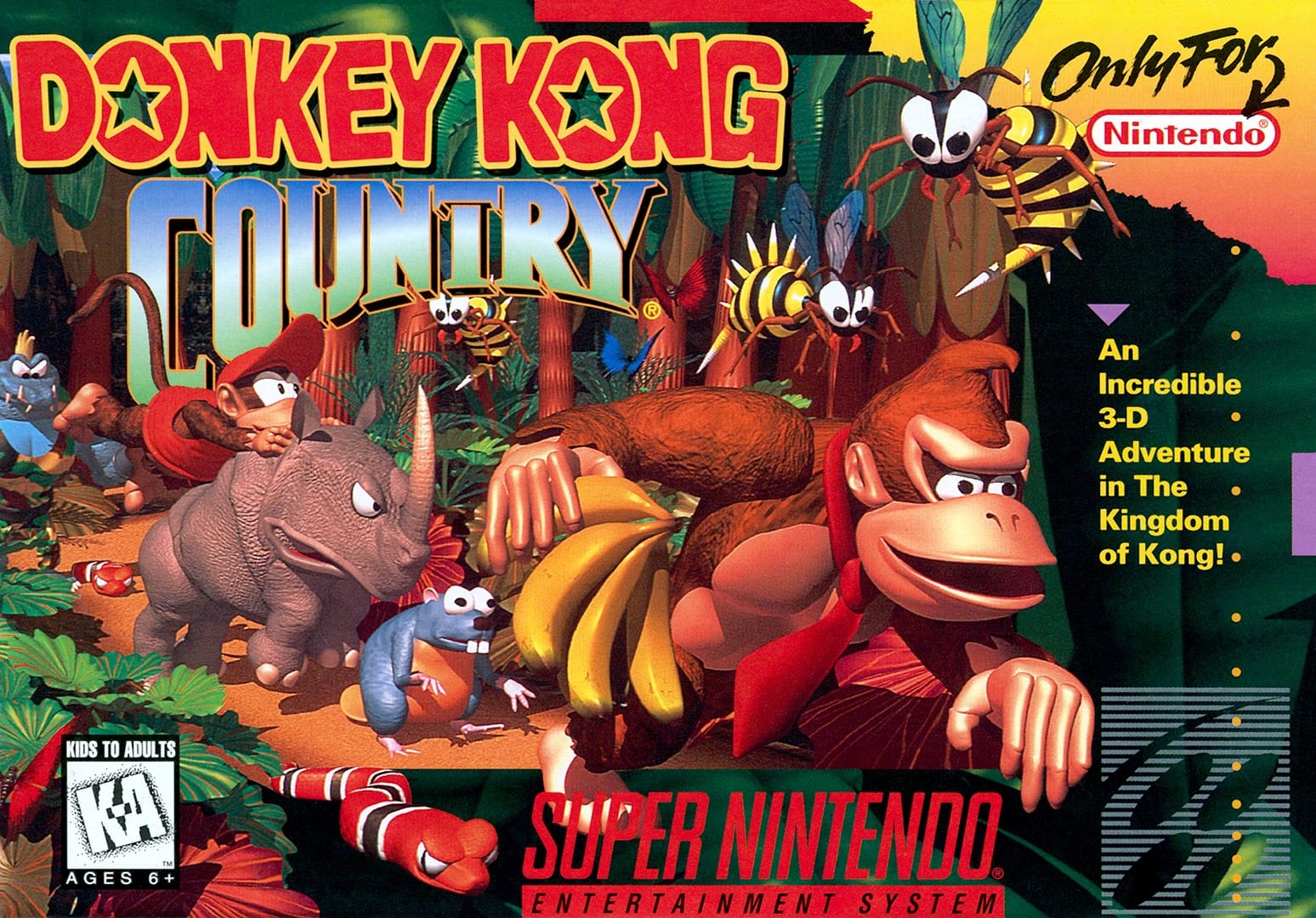
- Developer: Rare
- Release Year: 1994
When Donkey Kong Country burst onto the scene, it blew players away with its groundbreaking pre-rendered 3D graphics—something no one thought possible on a 16-bit console. But visuals weren’t its only strength: the game’s smooth, momentum-driven platforming and dynamic level design were just as impressive. From the slippery slopes of Snow Barrel Blast to the intense minecart runs, each stage was meticulously crafted to keep players on their toes. The unforgettable David Wise soundtrack gave every level a unique mood, making everything from serene jungles to eerie caves feel alive.
Why It’s Worth Playing: Donkey Kong Country redefined what platformers could look and sound like, delivering tight gameplay and an atmospheric world. It’s a must-play for experiencing the moment when 16-bit games took a giant leap forward.
Donkey Kong Country 2: Diddy’s Kong Quest
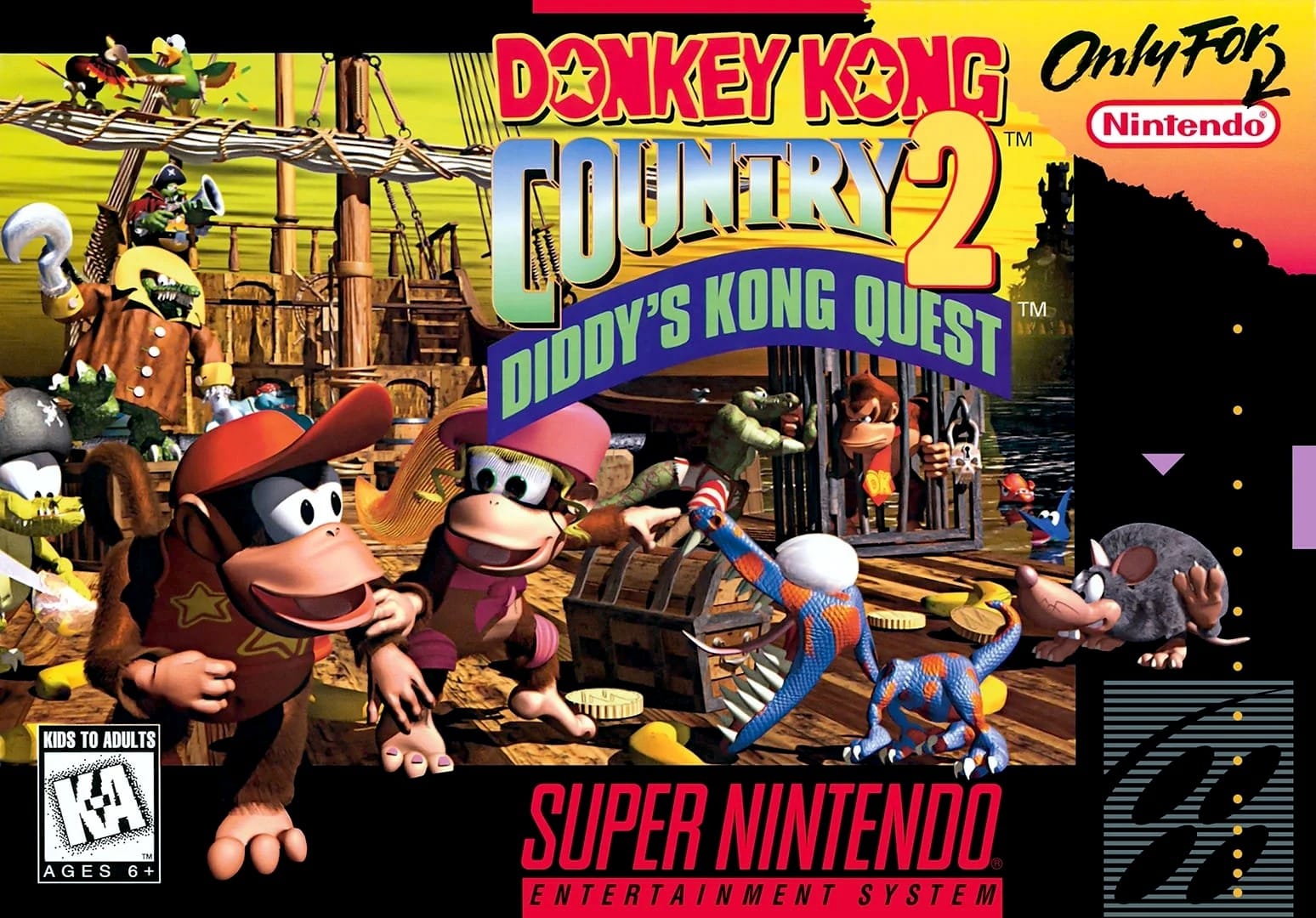
- Developer: Rare
- Release Year: 1995
Diddy’s Kong Quest didn’t just build on the first game—it elevated everything. Featuring more varied environments like lava-filled bramble mazes and haunted pirate ships, it pushed level creativity to new heights. The tag-team dynamic between Diddy and Dixie Kong introduced deeper gameplay possibilities, with Dixie’s ponytail spin adding fresh traversal mechanics. Boss fights were bigger and more inventive, and the soundtrack—featuring tracks like “Stickerbush Symphony”—became legendary among gamers.
Why It’s Worth Playing: Widely considered the pinnacle of the trilogy, DKC2 is an absolute masterclass in level design, challenge, and atmosphere. If you want the best the SNES has to offer, start here.
Donkey Kong Country 3: Dixie Kong’s Double Trouble
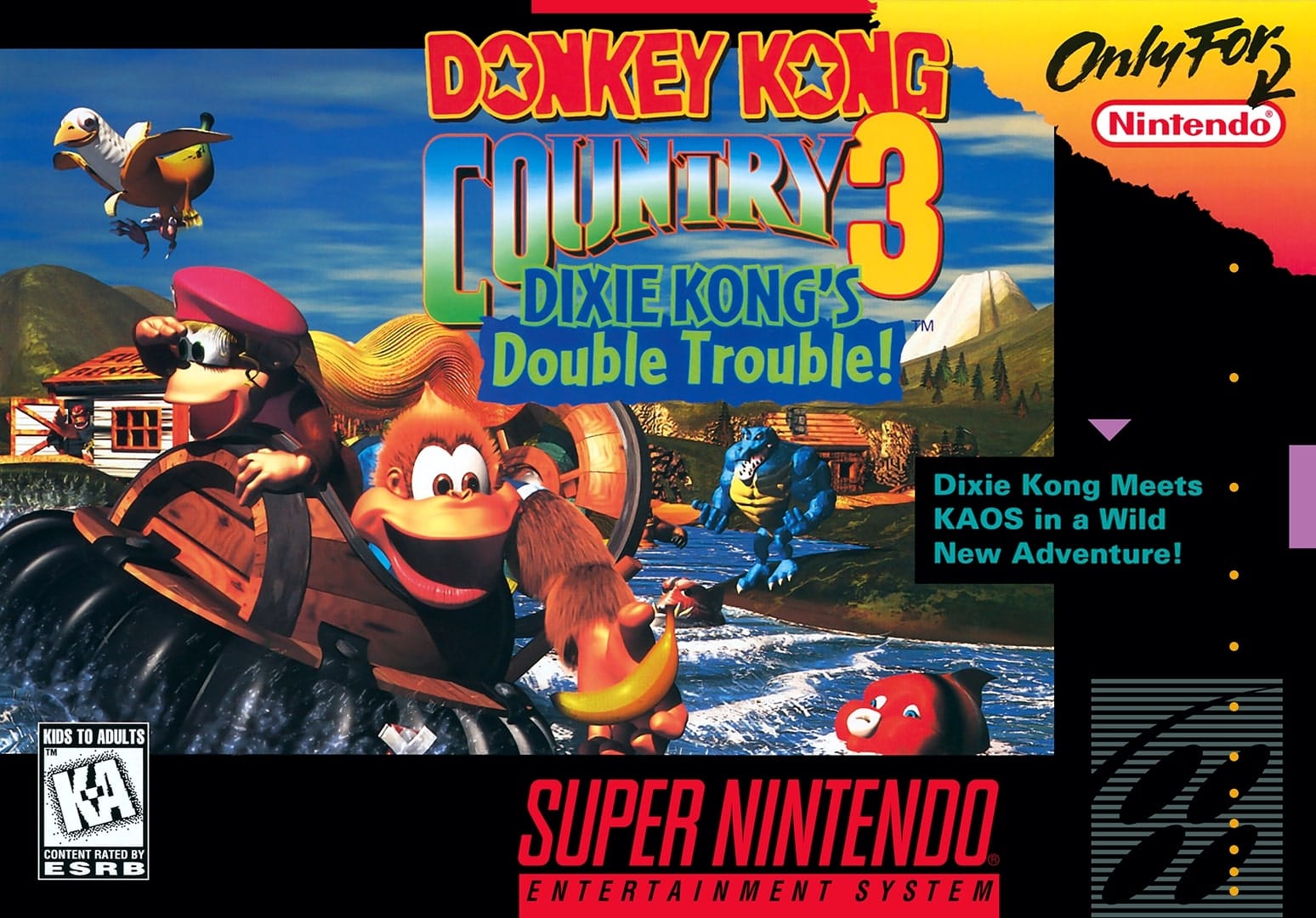
- Developer: Rare
- Release Year: 1996
The final entry in the SNES trilogy, Dixie Kong’s Double Trouble took bold risks. Starring Dixie and newcomer Kiddy Kong, it introduced new overworld exploration with hidden areas, swappable vehicles, and side quests that gave the game an adventure-like feel. Levels featured creative gimmicks like shifting water levels and environmental puzzles that kept gameplay fresh, even if some fans missed the darker tone of DKC2. Despite divided opinions, the game refined the series’ platforming mechanics and offered some of the trilogy’s most inventive stage designs.
Why It’s Worth Playing: DKC3 may not reach the heights of its predecessor, but it stands as a polished, ambitious platformer with unique ideas. It’s essential for anyone who wants to experience the full evolution of this groundbreaking trilogy.
Plok!
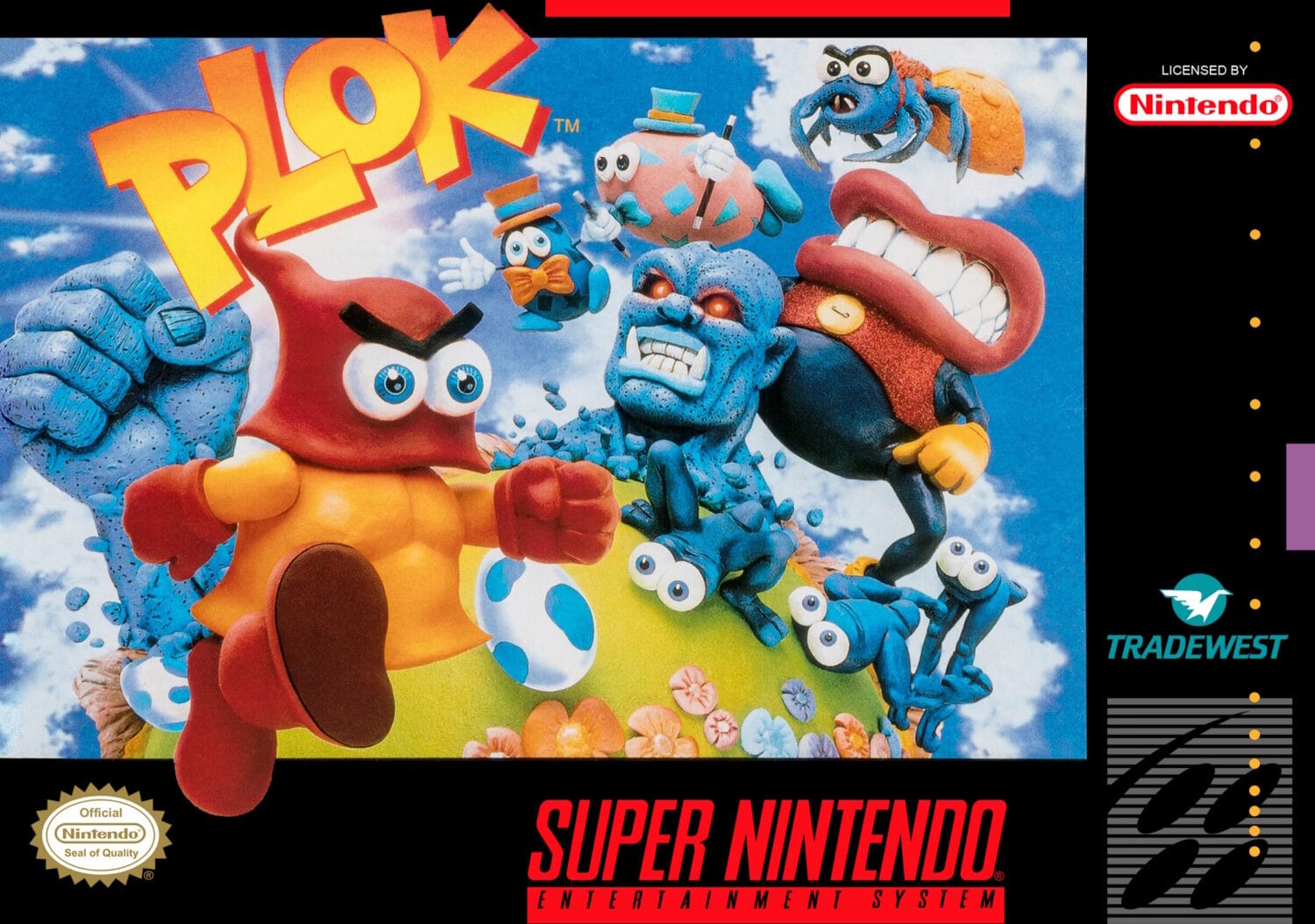
- Developer: Software Creations
- Release Year: 1993
Plok! is a quirky, unsung hero of the SNES library—a platformer with a wild sense of humor and a surprisingly high level of challenge. Players control Plok, a red-and-yellow creature who attacks by launching his own limbs at enemies. The game’s unique projectile-based combat feels like a proto-melee-shooter, while the bright, surreal levels shift from cheerful beaches to nightmarish forests. Tim Follin’s soundtrack is an absolute standout, blending prog-rock influences into one of the best and most underappreciated soundtracks of the 16-bit era. Despite its cartoonish look, Plok! can be brutally tough, testing reflexes and memory with tricky enemy patterns and boss fights.
Why It’s Worth Playing: Plok! combines imaginative mechanics with unforgettable music and an offbeat world. It’s a hidden gem that rewards players willing to embrace its weirdness and difficulty, offering an experience unlike any other SNES platformer.
Super Bonk
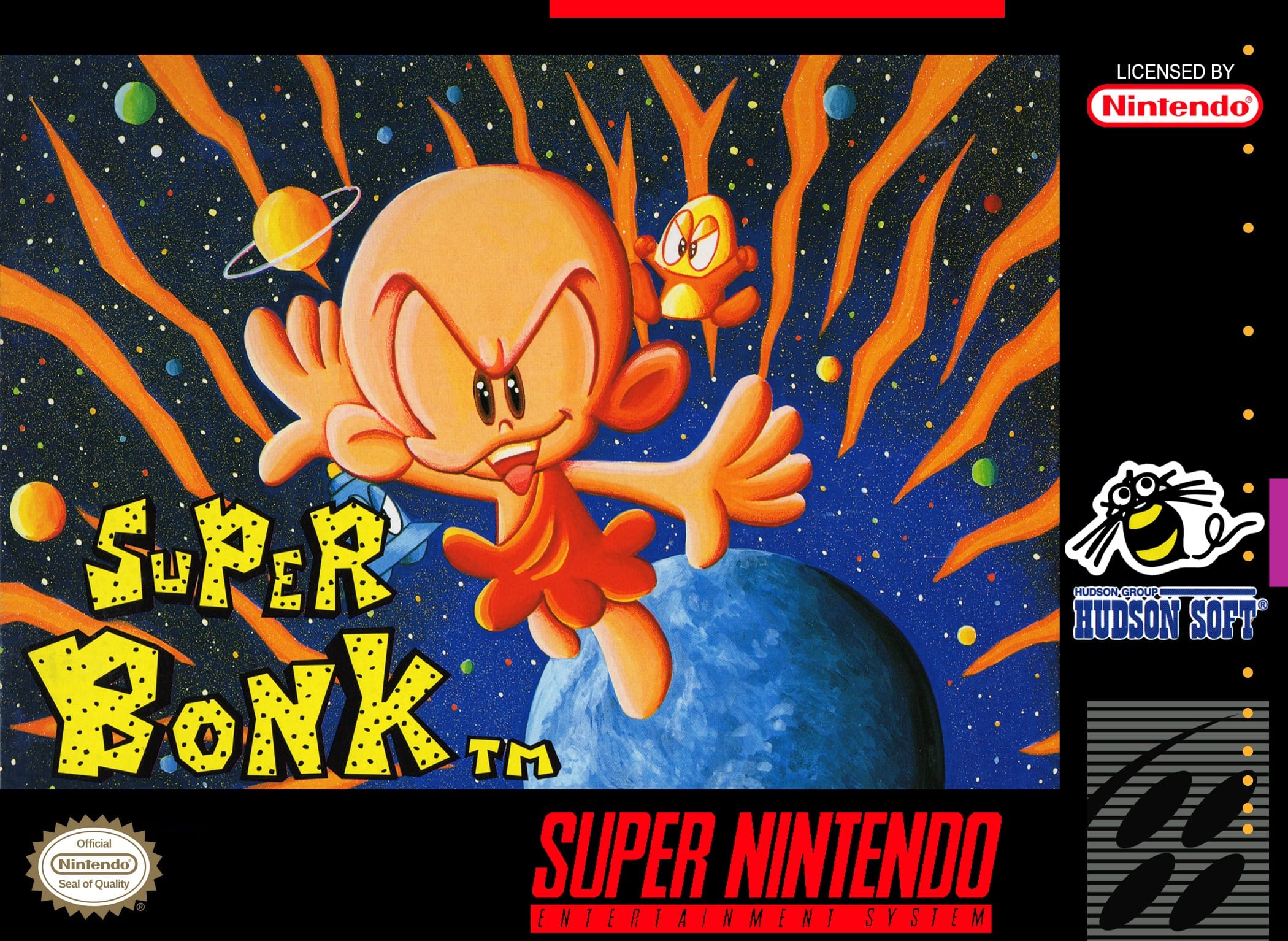
- Developer: A.I. Co, Ltd.
- Release Year: 1994
In Super Bonk, you play as Bonk the caveman, smashing enemies with his oversized noggin across time-bending levels that jump from prehistoric jungles to bustling modern cities and even inside the belly of a giant dinosaur. What makes Super Bonk so memorable is its wild, surreal stage design—Bonk can shrink, grow, or transform into creatures like a crab or dinosaur, changing gameplay dramatically. Combined with colorful, cartoonish visuals and Hudson Soft’s trademark wacky humor, every level feels like a new surprise.
Why It’s Worth Playing: If you’re looking for a platformer that throws logic out the window in favor of pure, unpredictable fun, Super Bonk is a must. It’s one of the strangest, most creative platformers on the SNES—and that’s saying something.
Congo’s Caper
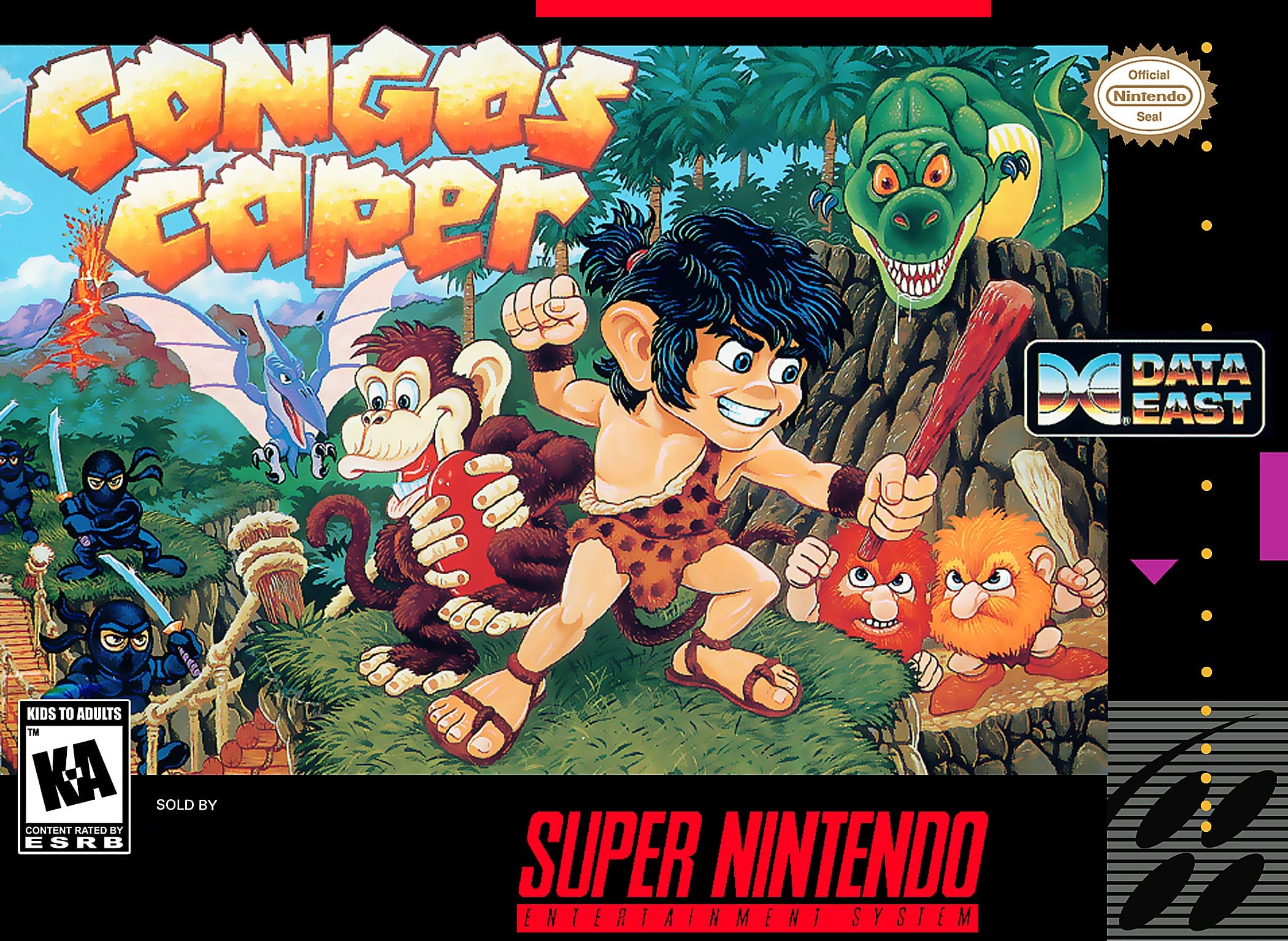
- Developer: Data East
- Release Year: 1992
Congo’s Caper flew under the radar when it launched, but it’s a charming, well-crafted platformer that deserves more love. A spiritual successor to Joe & Mac, it stars a half-monkey, half-boy hero who swings his club through colorful levels packed with dinosaurs, pirates, and other cartoonish threats. The game’s responsive controls, satisfying combat, and variety of levels—from lava caves to bamboo forests—make it easy to pick up but hard to put down. Bonus stages and secret items encourage exploration, giving it more depth than many expected.
Why It’s Worth Playing: Congo’s Caper might not have the flashiest visuals, but it’s a rock-solid platformer with a sense of humor and tight gameplay. Perfect for fans of overlooked titles who want a fun, straightforward platforming romp.
Pitfall: The Mayan Adventure
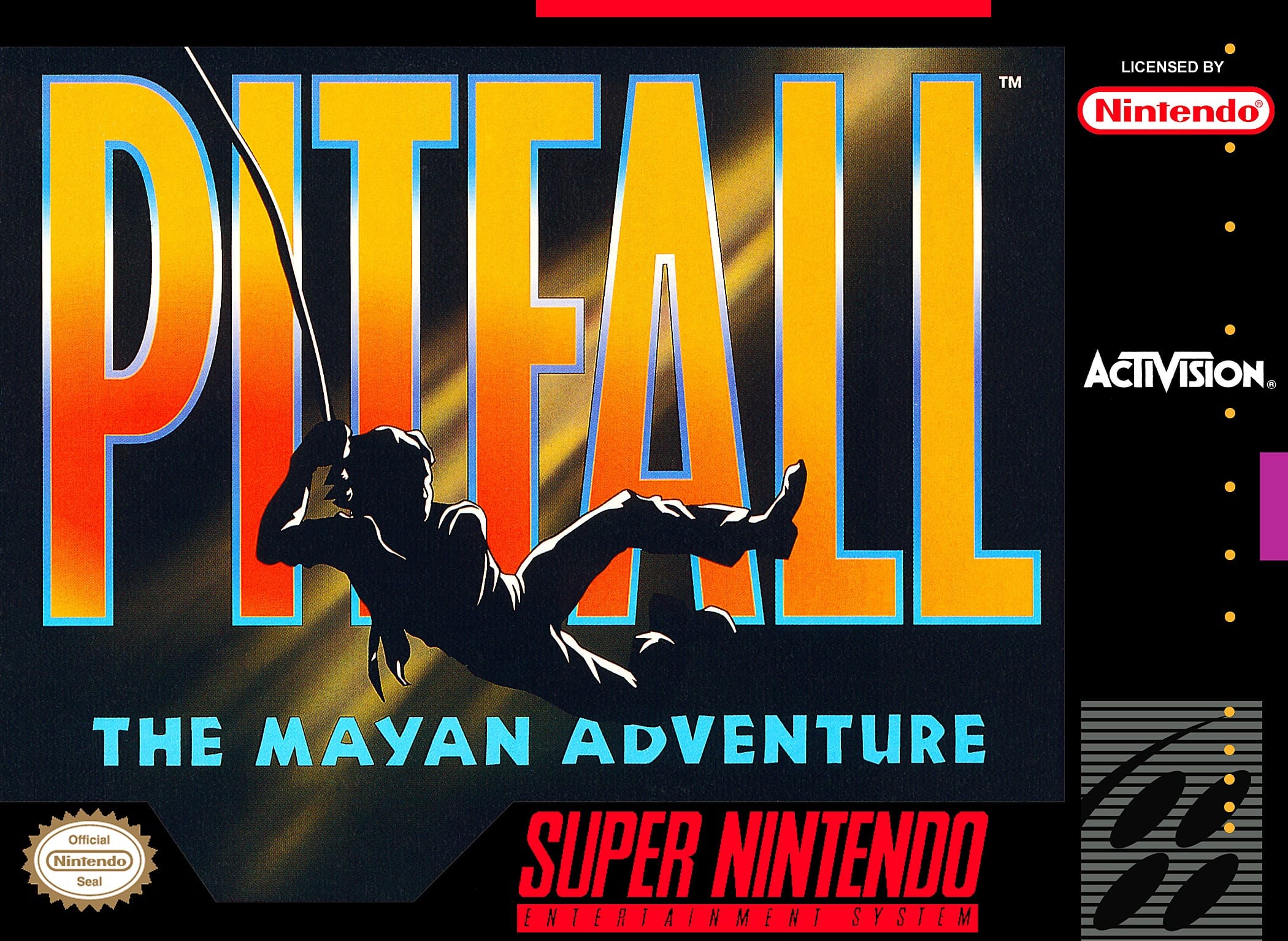
- Developer: Activision
- Release Year: 1994
Pitfall: The Mayan Adventure brought the legendary Atari series roaring into the 16-bit era with vibrant, fluidly animated jungle environments and challenging platforming sequences. You guide Harry Jr. through perilous temples, vine-filled forests, and ancient ruins, facing deadly traps and wild animals at every turn. The game’s smooth animation and rotoscoped character movements were stunning for the time, making every jump, swing, and slide feel excitingly dynamic. Hidden levels, including a playable version of the original Pitfall! arcade game, gave nods to the series’ roots while pushing the genre forward.
Why It’s Worth Playing: Pitfall: The Mayan Adventure is a thrilling mix of old-school spirit and modern (for its time) presentation. It’s a challenging, atmospheric platformer that still holds up for fans of classic adventuring and retro exploration.
Rocko’s Modern Life: Spunky’s Dangerous Day
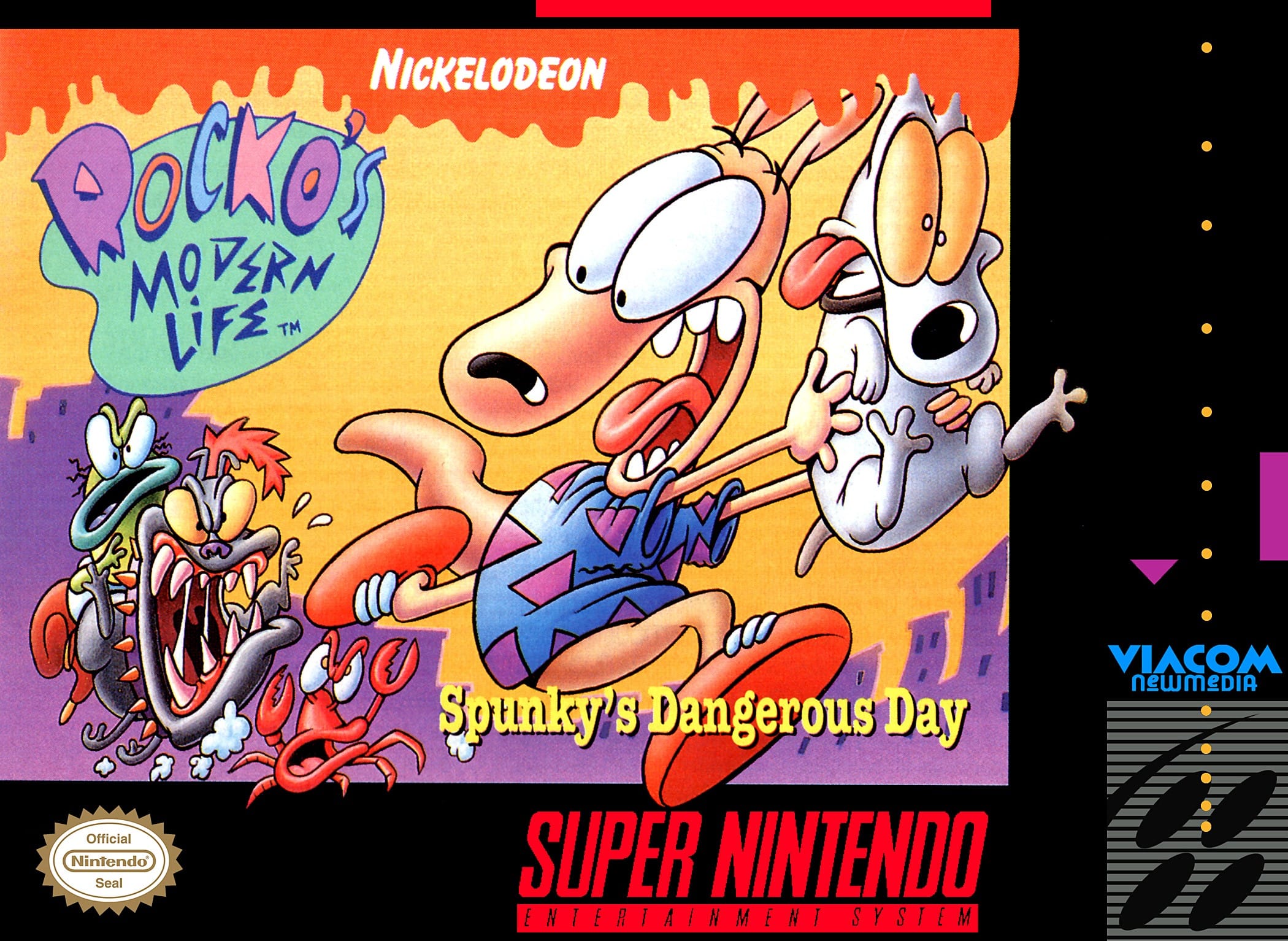
- Developer: Viacom New Media
- Release Year: 1994
This overlooked SNES platformer transforms Nickelodeon’s wacky cartoon into a frantic escort mission, as Rocko must guide his dog Spunky through hazard-filled levels without letting him wander into danger. Gameplay is equal parts puzzle and platforming, requiring players to clear paths, activate switches, and time actions perfectly to keep Spunky safe. Levels are filled with references to the show’s offbeat humor and familiar locations like O-Town’s supermarket and Rocko’s neighborhood. While notoriously tough and sometimes frustrating, it captures the spirit of the cartoon with goofy animations and irreverent jokes.
Why It’s Worth Playing: Rocko’s Modern Life: Spunky’s Dangerous Day is a must for fans of ’90s Nicktoons, blending a unique gameplay hook with faithful cartoon charm. It’s a nostalgia trip worth the challenge if you love Rocko’s absurd world.
SWAT Kats: The Radical Squadron
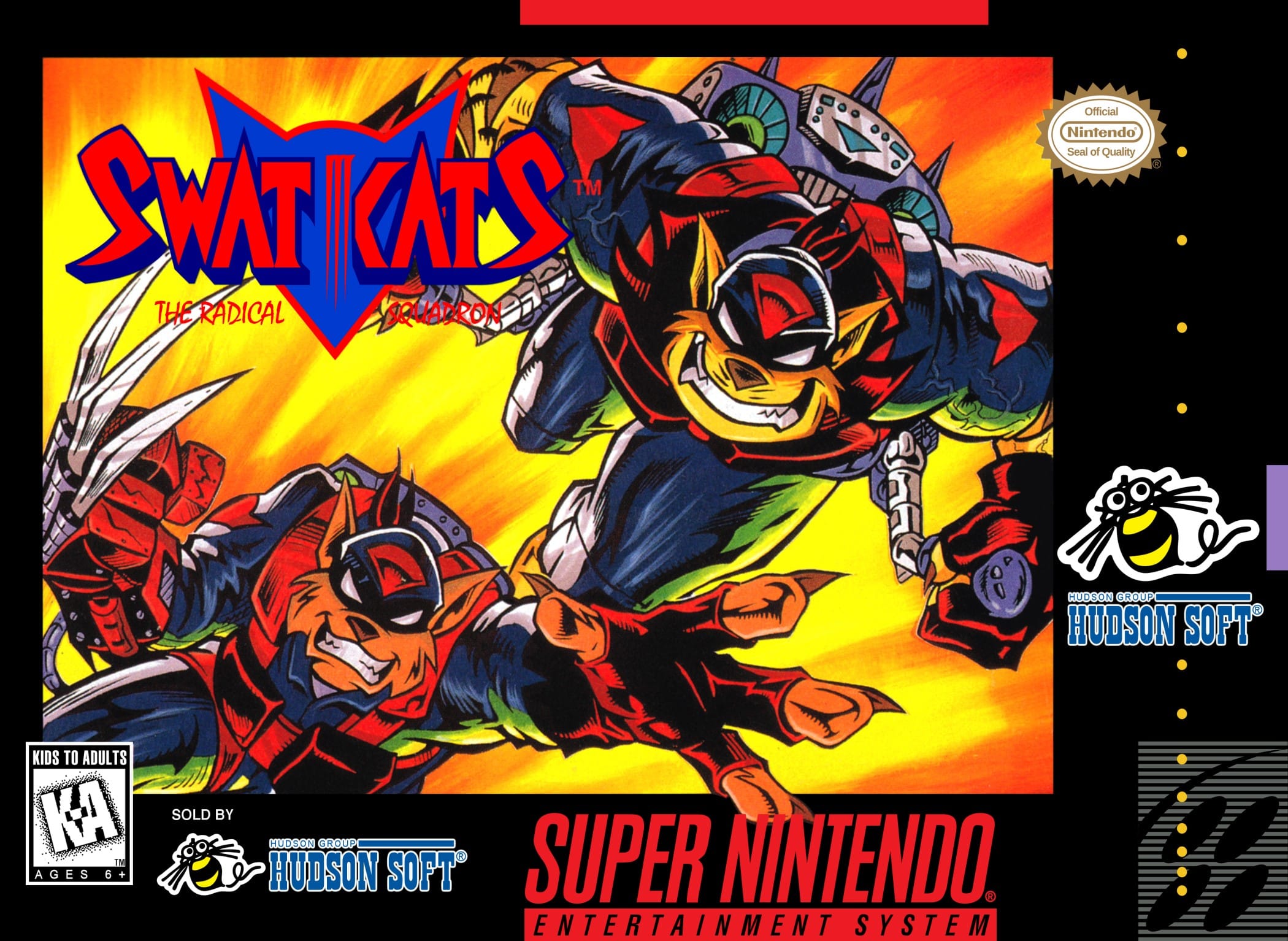
- Developer: AIM
- Release Year: 1995
Based on the cult classic cartoon, SWAT Kats: The Radical Squadron puts players in the boots of T-Bone or Razor, mixing intense side-scrolling platforming with vehicle segments piloting the Turbokat. Each level brims with enemies, destructible environments, and bosses inspired by villains from the show. The game captures the series’ kinetic energy, with detailed sprites, explosive animations, and a rocking soundtrack. Its fast-paced action and creative level design stand out among other licensed games of the era.
Why It’s Worth Playing: SWAT Kats is a hidden gem that brings Saturday morning cartoon excitement to the SNES. It’s a blast for players who love platformers with a dose of action and a side of radical ’90s attitude.
Earthworm Jim
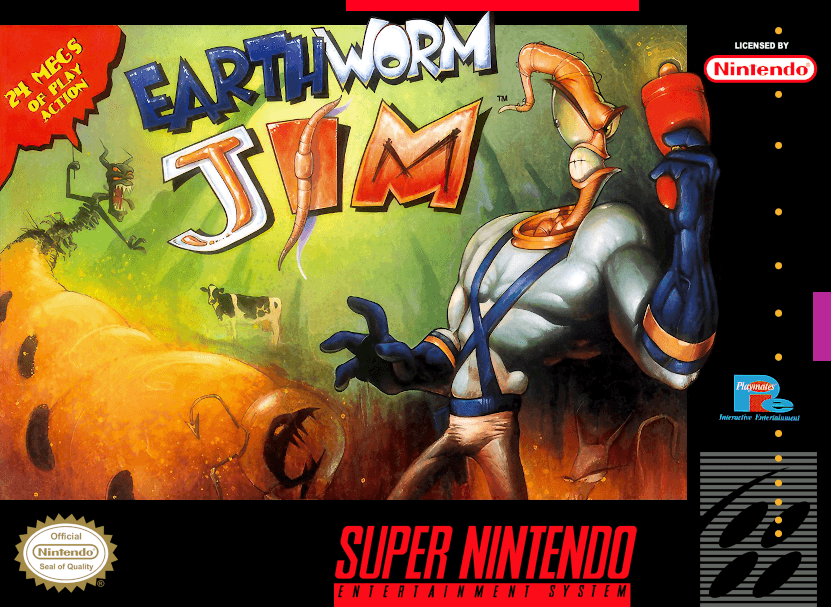
- Developer: Shiny Entertainment
- Release Year: 1994
Earthworm Jim took the SNES by storm with its outrageous sense of humor, bizarre enemies, and some of the slickest animations of the 16-bit era. Playing as Jim, an ordinary worm in a high-tech super suit, you’ll blast through surreal levels—from bungee-jumping in “Snot a Problem” to navigating the twisted hellscape of “What the Heck?” The game’s run-and-gun platforming is fast, challenging, and consistently inventive, with responsive controls that make combat and platforming feel satisfying. The exaggerated animations and detailed backgrounds give every stage a lively, cartoon-like personality, while the hilarious boss fights, like the evil goldfish Bob the Killer Goldfish, keep the surprises coming.
Why It’s Worth Playing: Earthworm Jim isn’t just a solid platformer; it’s a wild ride full of irreverent humor, creative level design, and unique gameplay moments that make it one of the SNES’s most memorable titles. It’s perfect for anyone who wants their platformers a little weirder—and a lot groovier.
Earthworm Jim 2
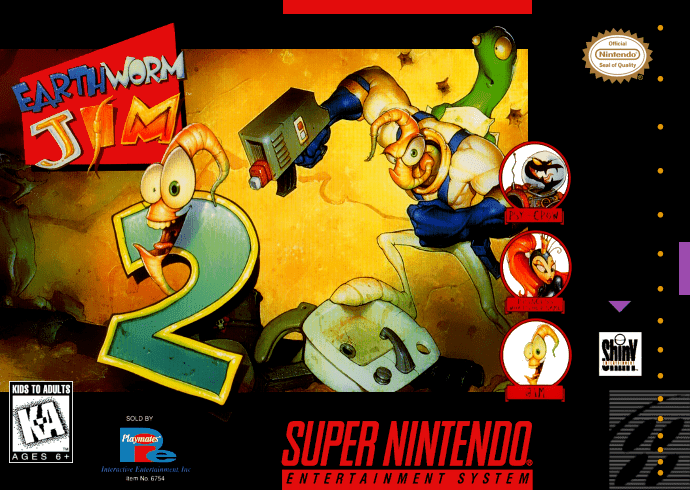
- Developer: Shiny Entertainment
- Release Year: 1995
Earthworm Jim 2 doubles down on everything that made the original great—then cranks up the absurdity. Levels vary wildly in both visuals and gameplay: you’ll pilot a submarine through digestive tracts, bounce puppies into marshmallow safety nets, and fight through game show parodies. The game adds new weapons and abilities, including Jim’s massive head whip, expanding combat options. Each stage feels like a self-contained joke with unique mechanics, keeping the experience unpredictable and endlessly entertaining. The music is just as delightfully oddball, with tracks that perfectly match each level’s ridiculous setting.
Why It’s Worth Playing: Earthworm Jim 2 refines and reimagines what a platformer can be, with constant variety and humor that never lets up. It’s a must-play for fans of off-the-wall adventures who want to see the SNES pushed in wildly creative directions.
Disney’s The Jungle Book
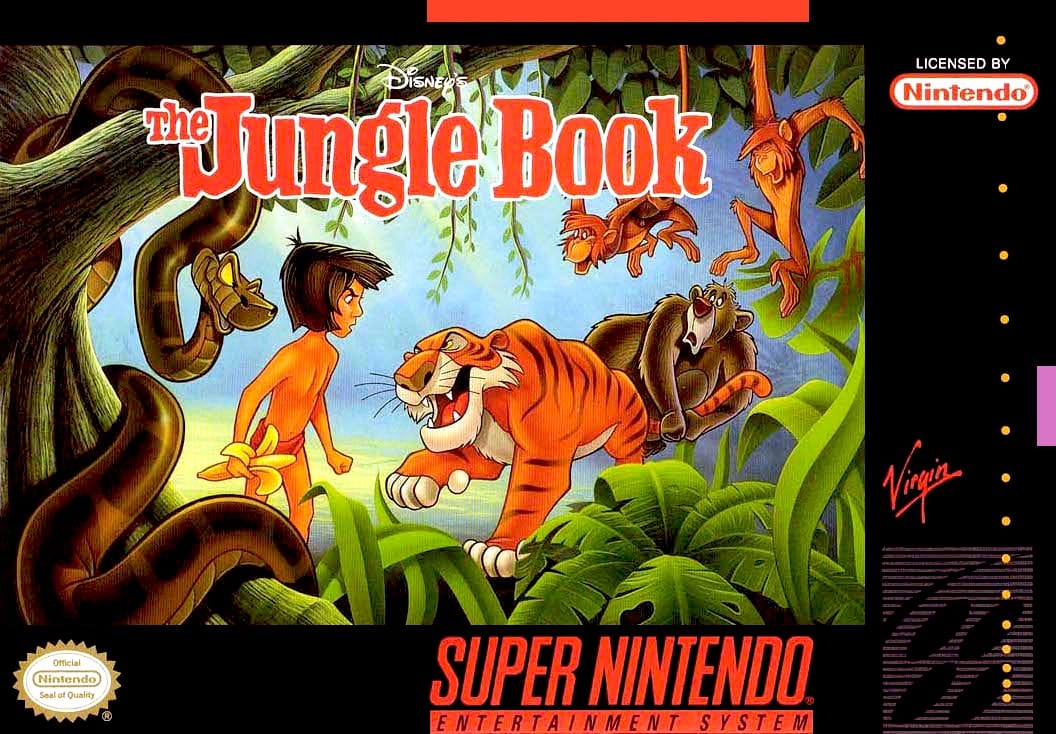
- Developer: Virgin Interactive Entertainment
- Release Year: 1994
The Jungle Book brings Disney’s animated classic to life with lush, colorful levels straight out of the movie’s jungle scenes. Players guide Mowgli through treetop platforms, ancient ruins, and dangerous rivers while facing familiar foes like Kaa and Shere Khan. The game’s crisp, fluid animations and detailed backgrounds capture the charm of the film, while solid platforming mechanics make swinging, climbing, and leaping through levels feel natural and fun. Each stage also offers a unique twist, from vine-swinging sequences to boss fights that demand quick reflexes.
Why It’s Worth Playing: The Jungle Book is a visual treat with smooth, challenging gameplay that stands among Disney’s best 16-bit adaptations. It’s perfect for fans of the film or anyone who loves a platformer with gorgeous, animated worlds.
Disney’s Aladdin
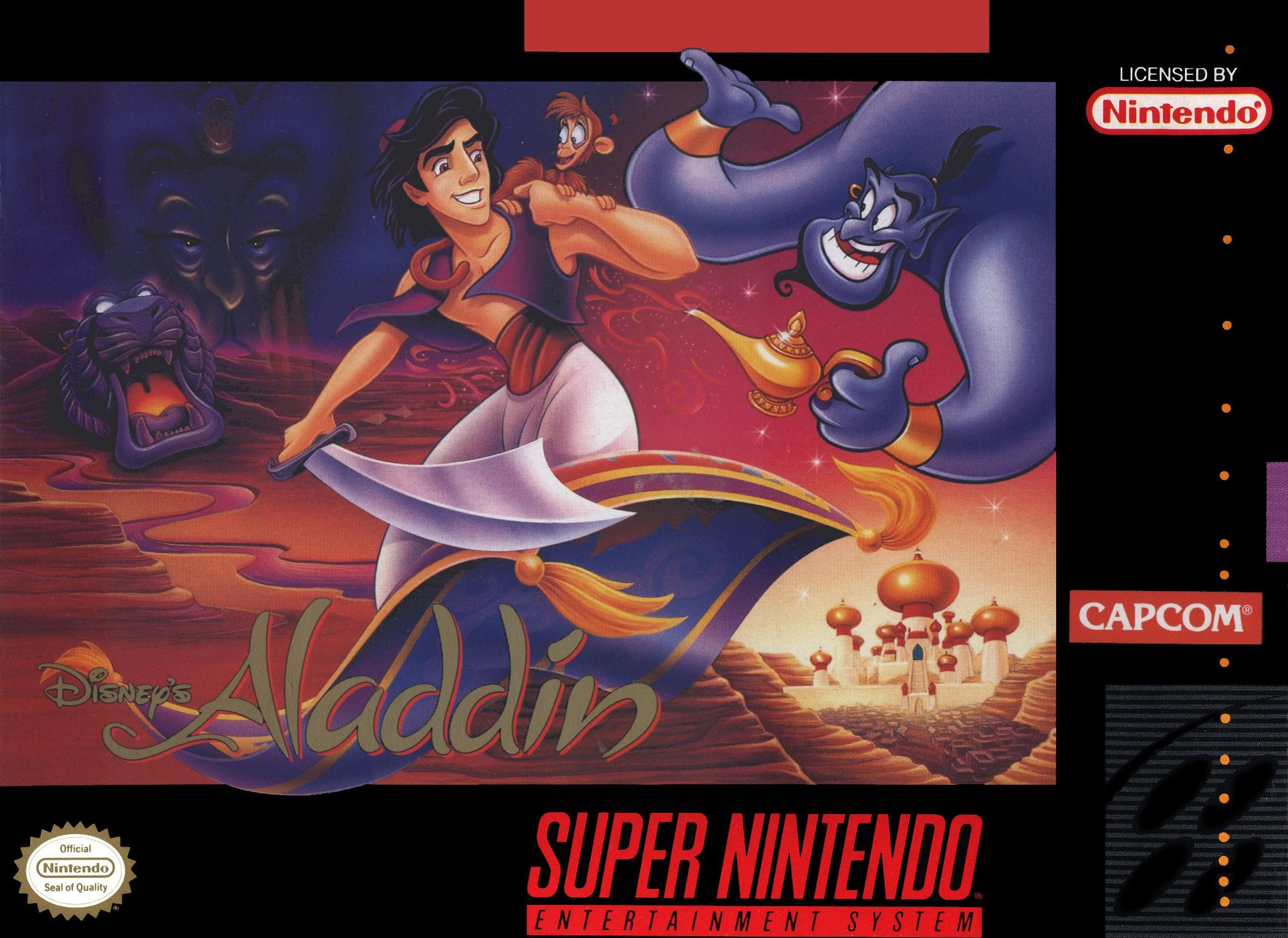
- Developer: Capcom
- Release Year: 1993
Disney’s Aladdin on SNES is a prime example of how to make a licensed game shine. Players guide Aladdin through Agrabah’s crowded streets, the Cave of Wonders’ glittering depths, and the Sultan’s Palace, all beautifully realized with expressive sprite work and cinematic cutscenes. Aladdin’s acrobatic moves, like bouncing off enemies and ledge-hopping, add fluidity to the platforming, while well-designed levels mix fast-paced action with exploration. The soundtrack brings Alan Menken’s iconic film score to life with bouncy SNES renditions of songs like “Prince Ali.”
Why It’s Worth Playing: Aladdin is a polished, joyfully animated platformer that captures the spirit of Disney’s classic movie. It’s an absolute must-play for fans of Disney or anyone craving a top-tier licensed SNES game.
Bugs Bunny: Rabbit Rampage
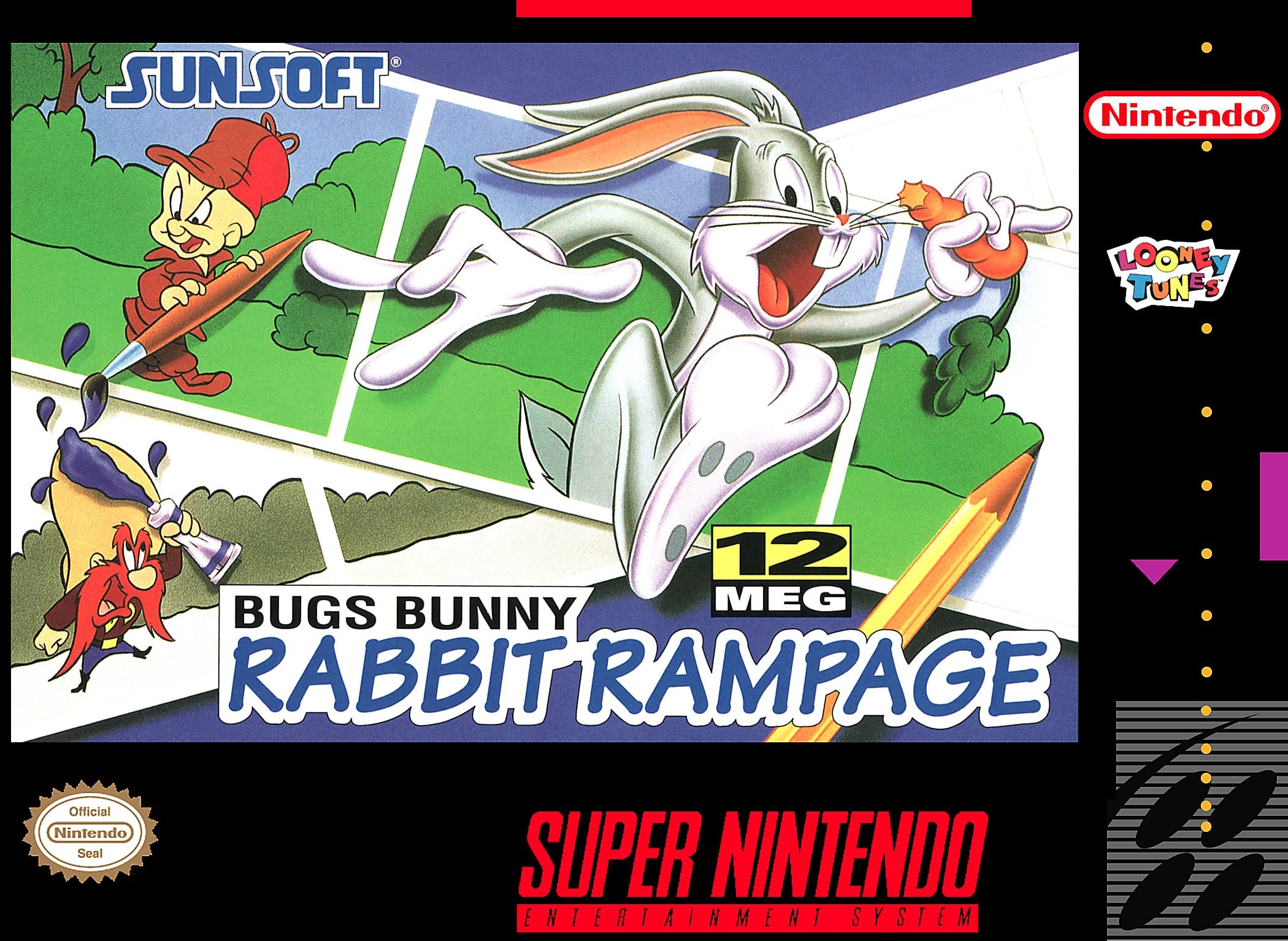
- Developer: Viacom New Media
- Release Year: 1994
Bugs Bunny: Rabbit Rampage lets players step into the role of Bugs himself as he’s tormented by an off-screen animator (Elmer Fudd) who manipulates the world in hilarious ways. Levels draw from classic Looney Tunes shorts, with instantly recognizable settings and zany enemies like Yosemite Sam and Taz. The gameplay blends straightforward platforming with unique cartoon gags—like paint buckets dropping from the sky or scenery changing mid-level—making every stage unpredictable and true to the spirit of Looney Tunes’ chaotic humor.
Why It’s Worth Playing: Rabbit Rampage is a must for fans of classic cartoons, delivering a playful, fourth-wall-breaking platformer filled with slapstick comedy and iconic characters. It’s a perfect mix of nostalgia and clever game design.
Super Adventure Island
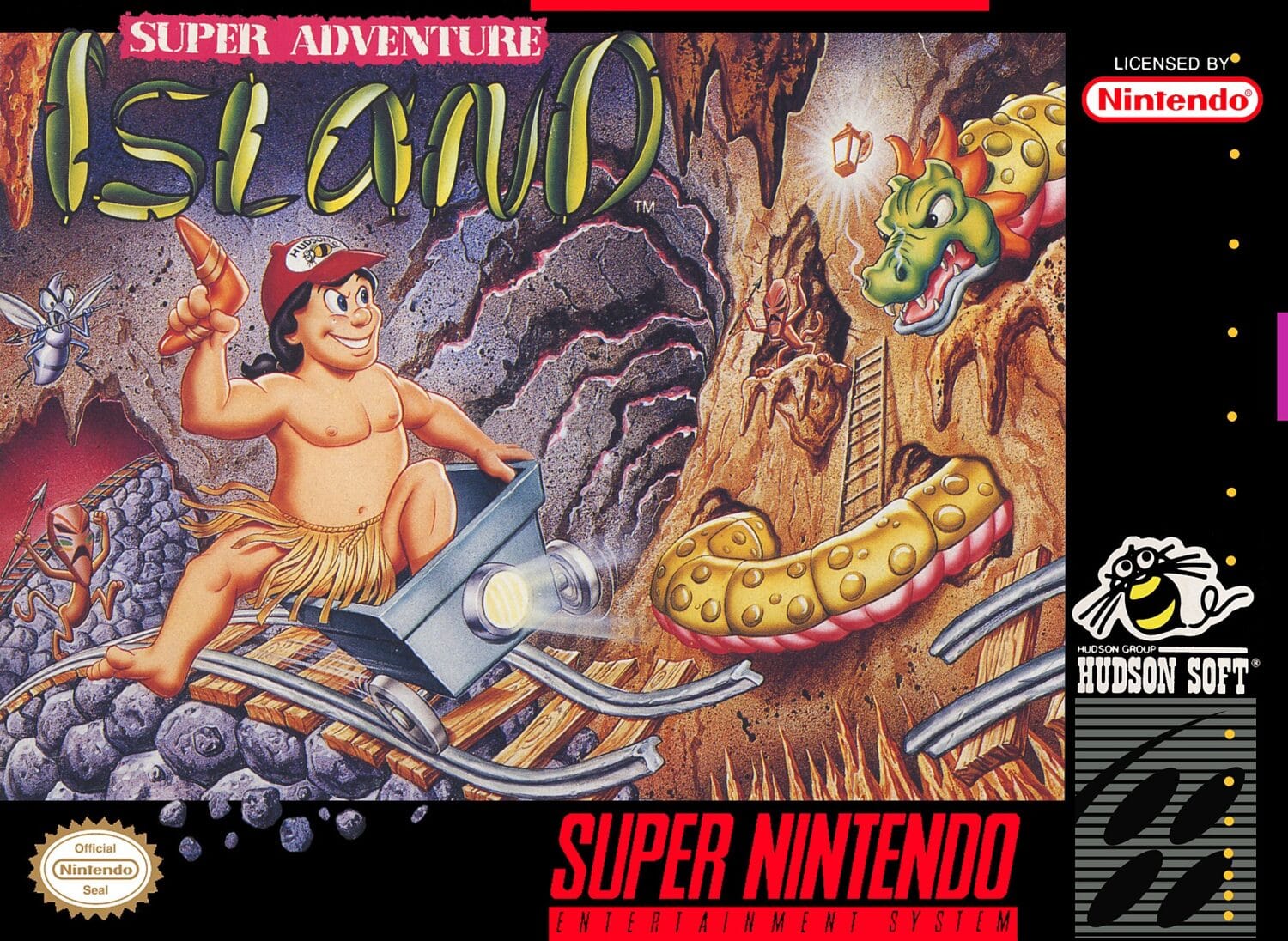
- Developer: Produce!
- Release Year: 1992
Super Adventure Island marks the first 16-bit outing for Master Higgins, the hero of Hudson’s long-running Adventure Island series. This installment sharpens the series’ classic formula with smoother controls, more vibrant tropical visuals, and a lush Yuzo Koshiro soundtrack that adds serious groove to the island vibes. Gameplay keeps the series’ signature momentum-based platforming, with Higgins sprinting through beaches, jungles, and caves while wielding stone axes or boomerangs. Timed jumps, tricky enemy patterns, and precision platforming challenge players while keeping stages brisk and rewarding.
Why It’s Worth Playing: Super Adventure Island is a straightforward, satisfying platformer that captures the carefree island spirit. Its tight gameplay and catchy soundtrack make it a go-to for fans of classic arcade-inspired platforming done right.
Super Adventure Island II
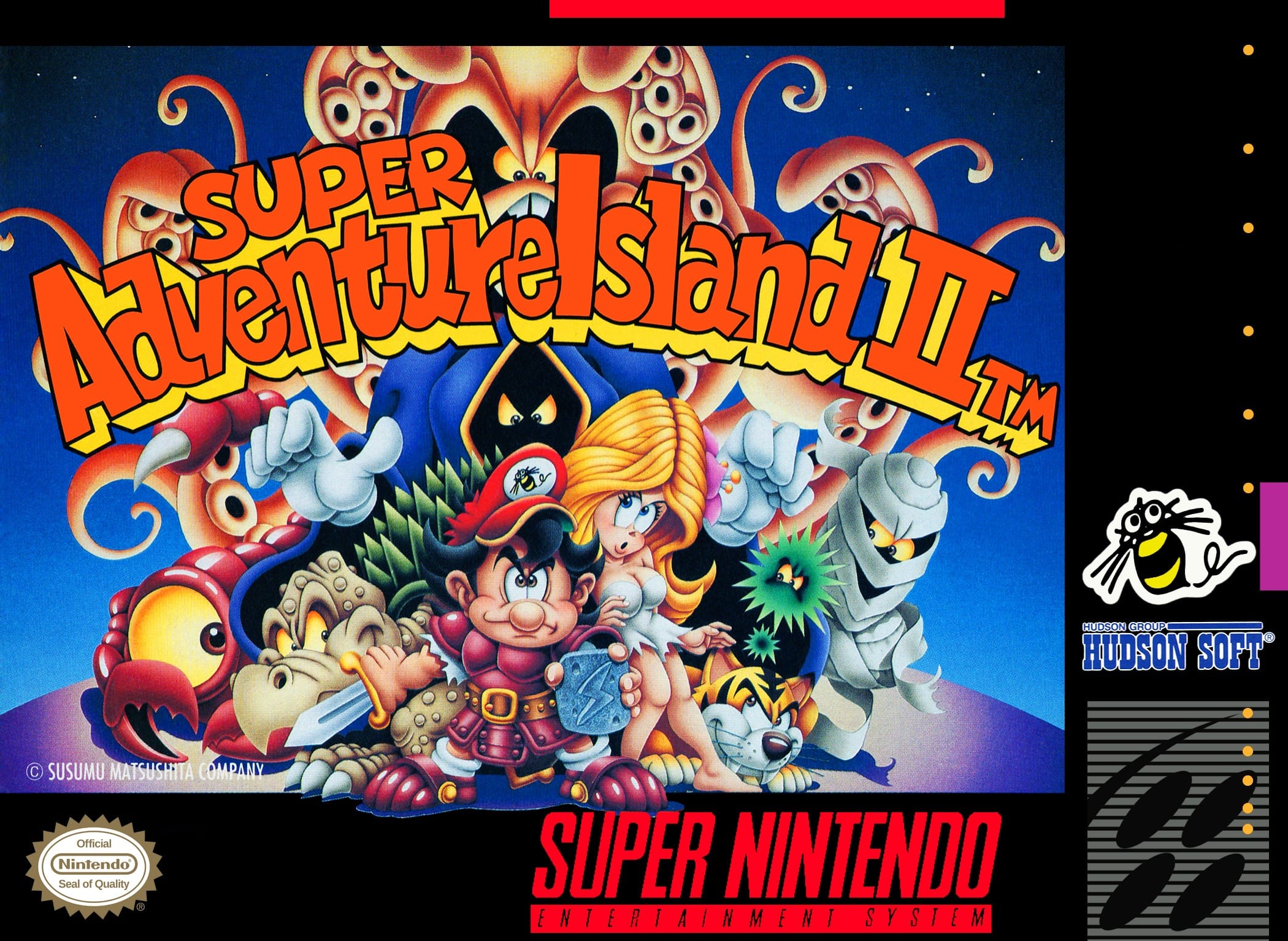
- Developer: Produce!
- Release Year: 1994
Super Adventure Island II boldly reimagines the series by blending traditional platforming with light RPG mechanics. Master Higgins explores interconnected islands, collects equipment to access new areas, and engages in simple dialogue with quirky NPCs, adding a sense of adventure and progression missing from earlier games. The game’s tropical overworld and charming pixel art give it a bright, inviting atmosphere, while the gradual acquisition of swords, shields, and armor provides a satisfying sense of growth. The mix of exploration, platforming, and light puzzle-solving makes it feel closer to a tropical Zelda than a straight action-platformer.
Why It’s Worth Playing: Super Adventure Island II stands out for daring to evolve beyond simple platforming. It’s a hidden gem perfect for players craving a platformer with RPG depth and a breezy, island-hopping sense of adventure.
Joe & Mac
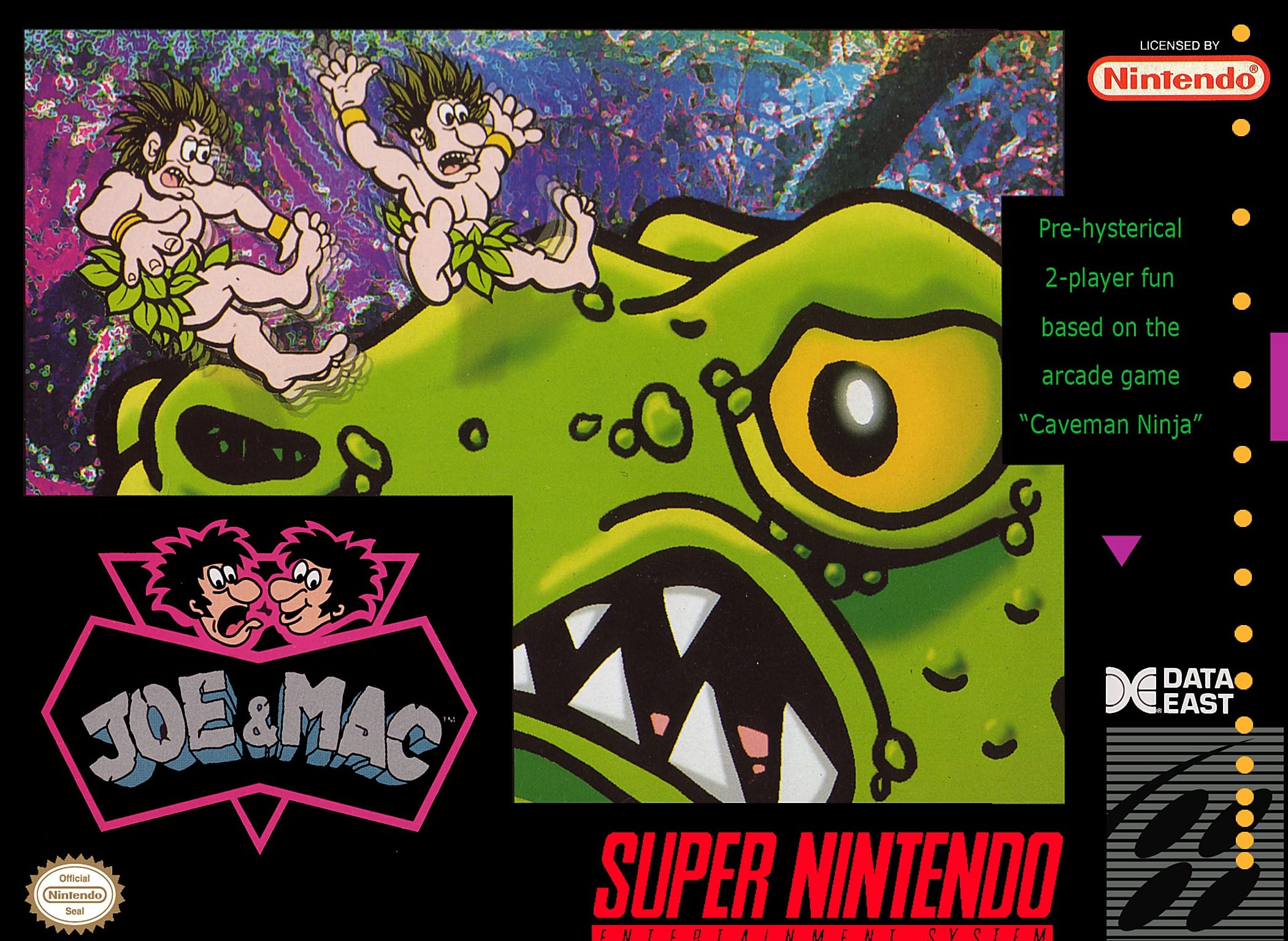
- Developer: Data East
- Release Year: 1991
Joe & Mac is a stone age romp that combines fast-paced platforming with slapstick humor and over-the-top prehistoric action. Playing solo or with a friend, you guide the green- and blue-haired cavemen through jungles, volcanoes, and icy caves to rescue kidnapped cavewomen, battling dinosaurs, giant plants, and bizarre bosses along the way. The game’s vibrant cartoon graphics and goofy animations perfectly match its lighthearted tone, while a variety of weapons—like stone wheels and bone boomerangs—keep combat fresh. Co-op mode turns the adventure into a chaotic, laugh-filled experience as players bash enemies and each other in the heat of battle.
Why It’s Worth Playing: Joe & Mac offers simple yet addictive platforming fun, with hilarious animations and great co-op play that make it a perfect pick for retro gaming sessions with friends.
Joe & Mac 2: Lost in the Tropics
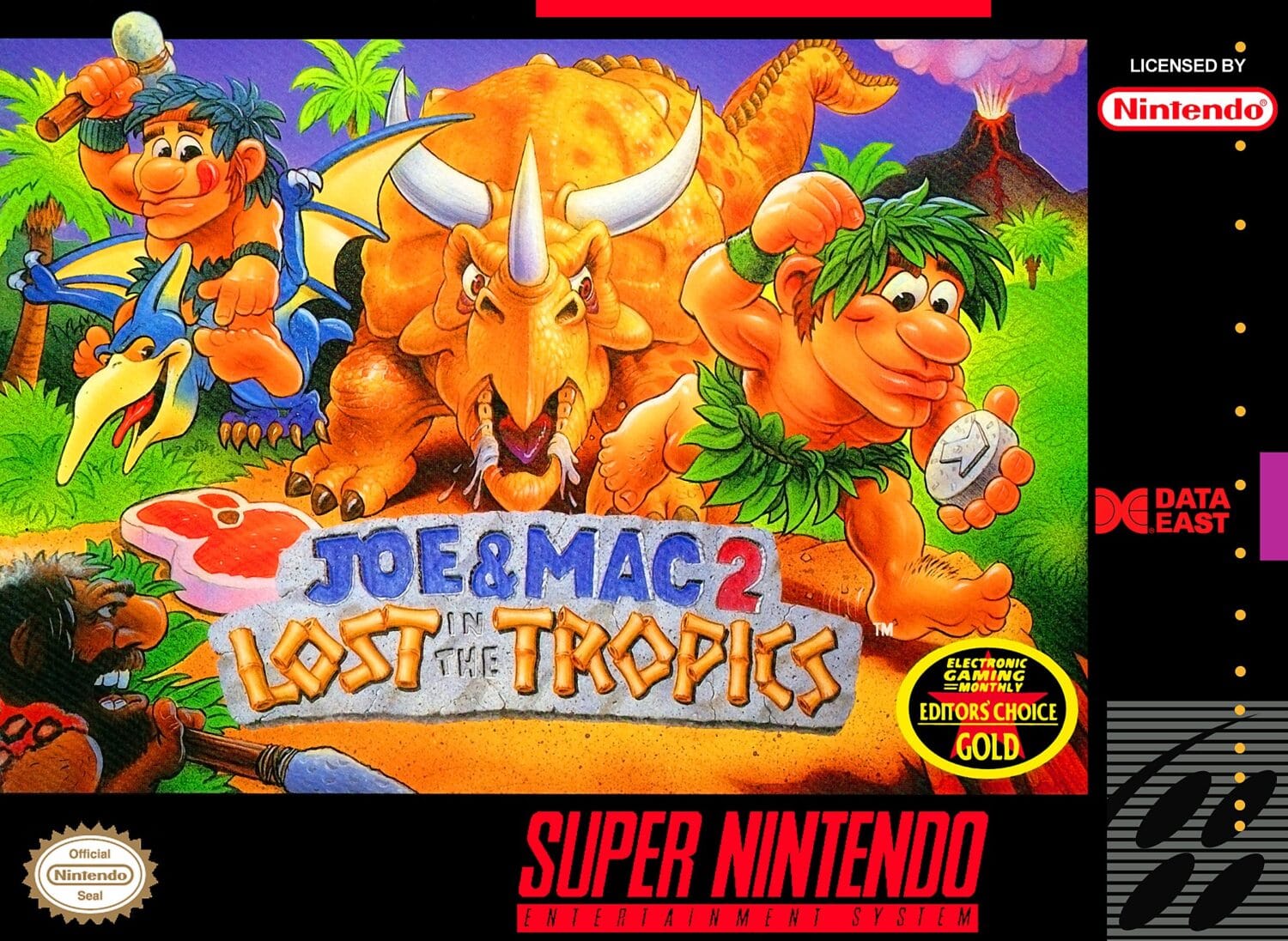
- Developer: Data East
- Release Year: 1994
Joe & Mac 2 refines everything that made the original a hit, introducing a more open-ended hub world where you can explore different areas in any order. The game deepens the experience with town-building elements—collecting money to upgrade your home and win the favor of potential cave brides—adding quirky RPG-lite mechanics to the classic platforming formula. Levels are bigger and more detailed, with creative boss fights and improved visuals bringing the prehistoric world to life. It retains the two-player chaos of the original but adds more variety, charm, and replayability.
Why It’s Worth Playing: Joe & Mac 2 delivers a more polished, creative platforming adventure with added layers of humor and progression. It’s a unique sequel that’s worth experiencing for fans of playful co-op games and retro platforming with a prehistoric twist.
Tiny Toon Adventures: Buster Busts Loose!
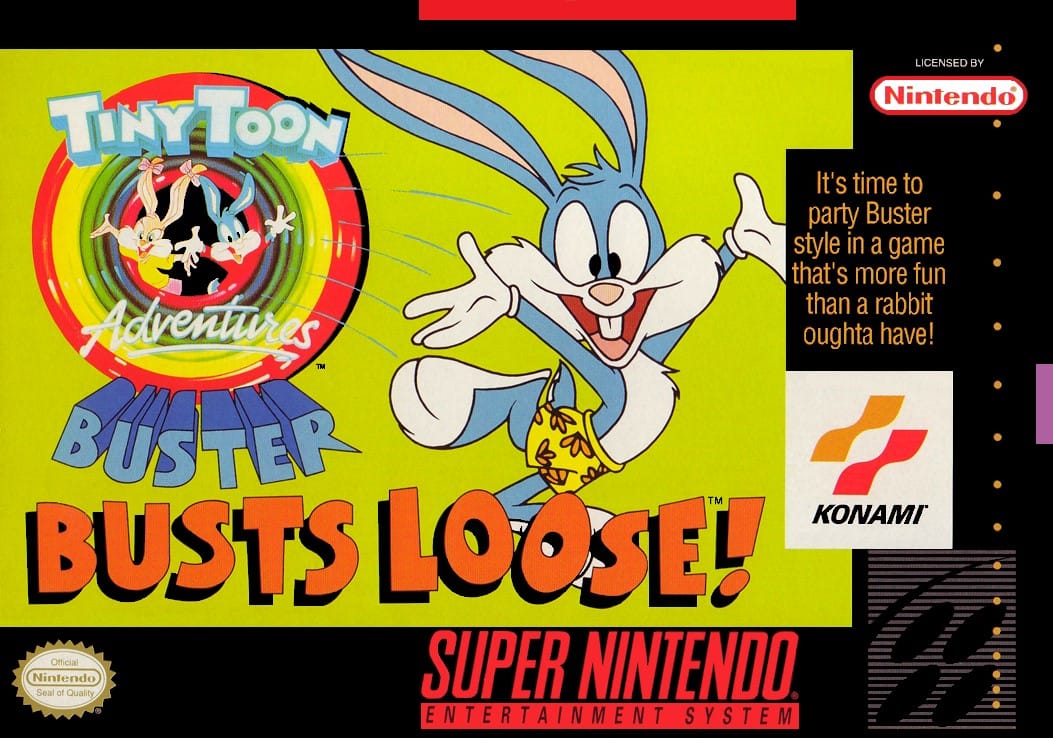
- Developer: Konami
- Release Year: 1992
Tiny Toon Adventures: Buster Busts Loose! perfectly channels the zany energy of the hit animated series into a kinetic, colorful platformer. Players control Buster Bunny across wildly varied levels inspired by classic cartoon hijinks, like stampeding through Acme Looniversity, dodging dinosaurs on a movie set, or soaring through a football-themed stage. The game’s standout dash mechanic lets Buster speed across platforms and smash enemies, adding a sense of momentum and excitement rarely seen in platformers of the era.
Why It’s Worth Playing: Buster Busts Loose! is a must for fans of Tiny Toon Adventures or anyone craving a fast, inventive platformer bursting with personality. It nails the feel of classic cartoons while delivering challenging, entertaining gameplay that’s still a blast today.
Sparkster
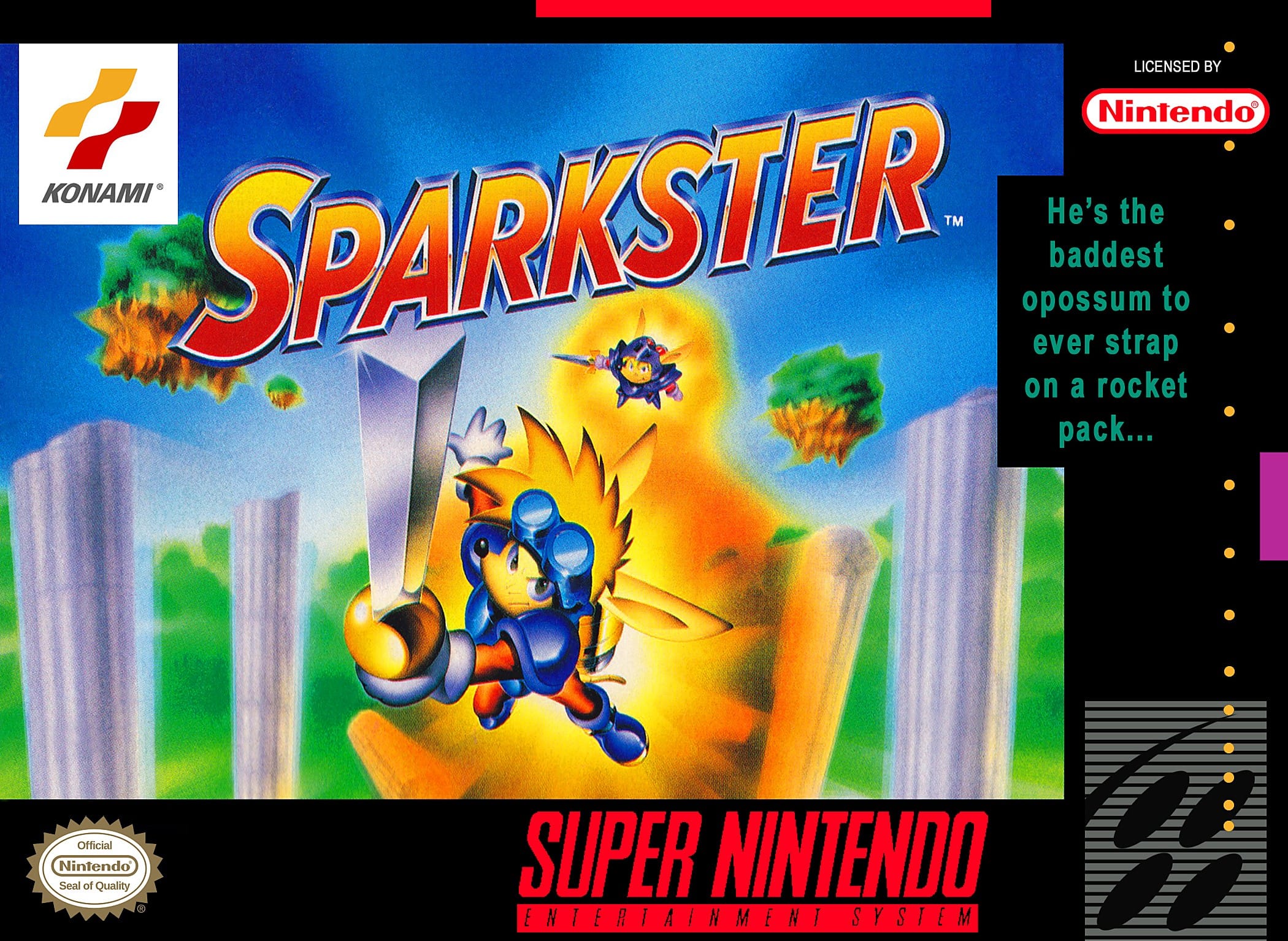
- Developer: Konami
- Release Year: 1994
Sparkster brings the Rocket Knight Adventures hero to the SNES in a dazzling, action-packed platformer that’s equal parts speed and spectacle. Armed with a sword and a rocket pack, Sparkster can slash enemies or blast off in any direction, adding a thrilling layer of vertical and horizontal movement. Levels are dynamic and creative, ranging from airborne battles against giant robots to intense castle sieges, with every stage feeling like a fresh, explosive set piece. Vibrant graphics, giant bosses, and a heroic soundtrack amp up the excitement, delivering a platformer with a grand sense of adventure and scale.
Why It’s Worth Playing: Sparkster is a standout SNES platformer that combines tight controls, inventive level design, and exhilarating rocket-powered gameplay. It’s perfect for players who want high-energy action and epic set pieces with a unique, charismatic hero.
Final Thoughts
The SNES wasn’t just a console—it was a playground where developers unleashed their wildest ideas, crafting platformers that pushed boundaries in art, design, and gameplay. From the inventive mechanics of Yoshi’s Island and the atmospheric brilliance of Super Metroid to the quirky charm of Plok! and the high-energy antics of Buster Busts Loose, these 25 games showcase the incredible diversity that made the SNES the undisputed king of 16-bit platformers. Even today, their creativity and polish remain unmatched, proving that great design transcends generations.
Whether you’re revisiting old favorites or discovering hidden gems, these platformers still offer tight controls, inventive level design, and unforgettable characters that make them every bit as fun today as they were decades ago. For newcomers, they’re a perfect introduction to an era when platformers ruled the gaming world—and for veterans, they’re a joyful reminder of why the SNES remains one of the greatest consoles of all time. Dust off your controller, fire up your Super Nintendo, and get ready to hop, dash, and blast your way through these timeless adventures.

